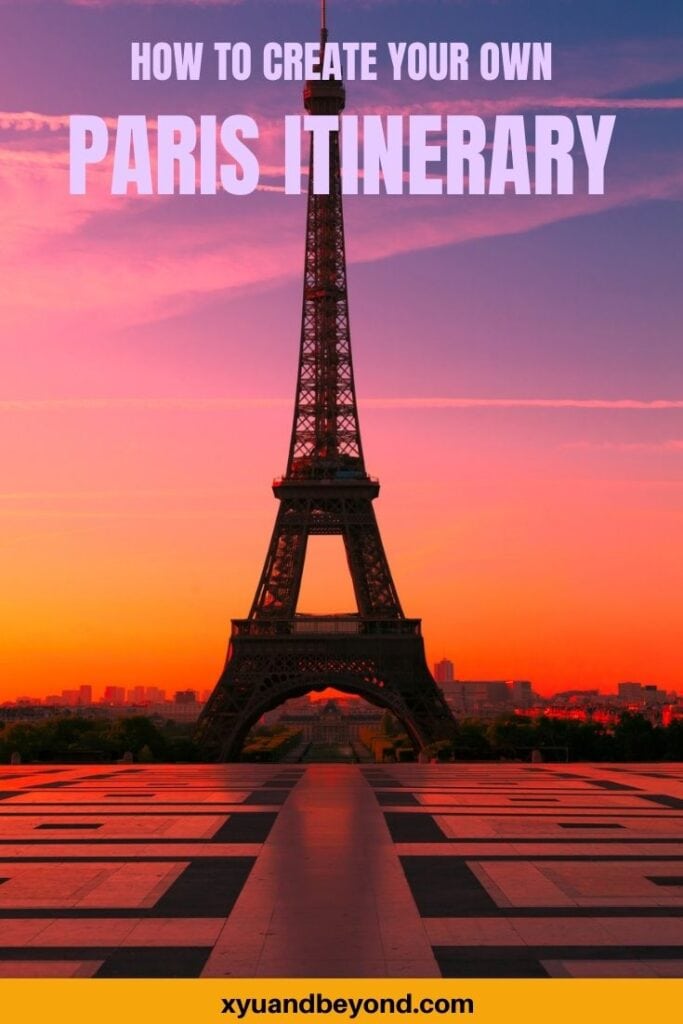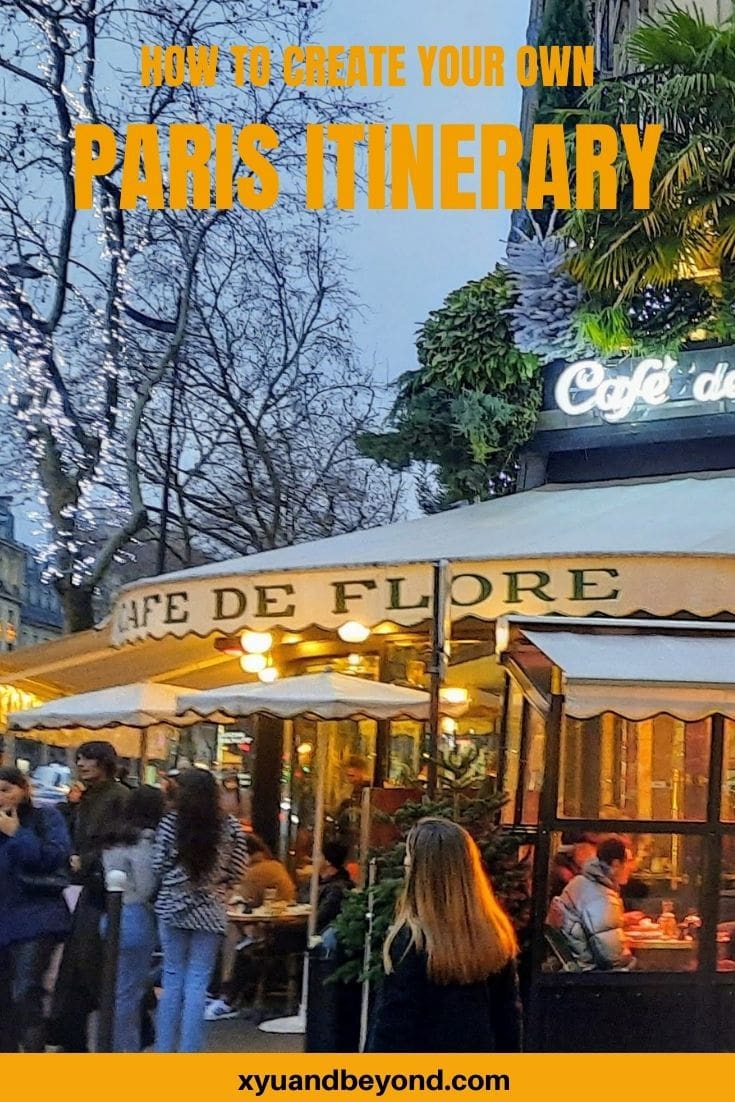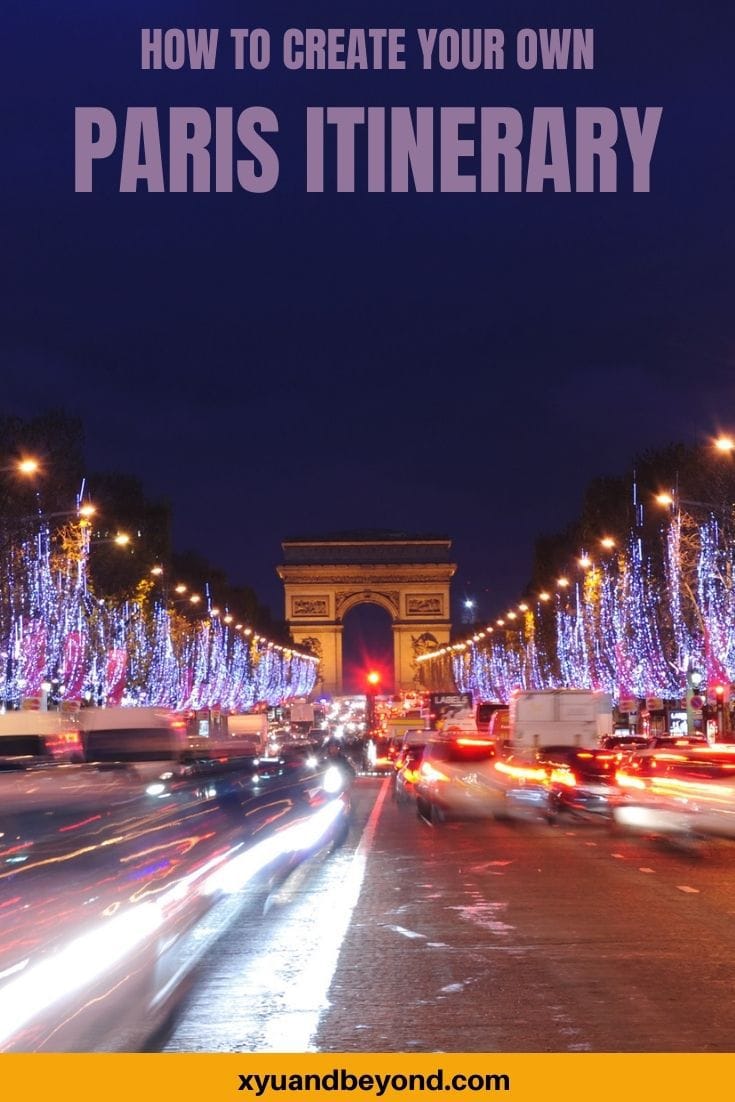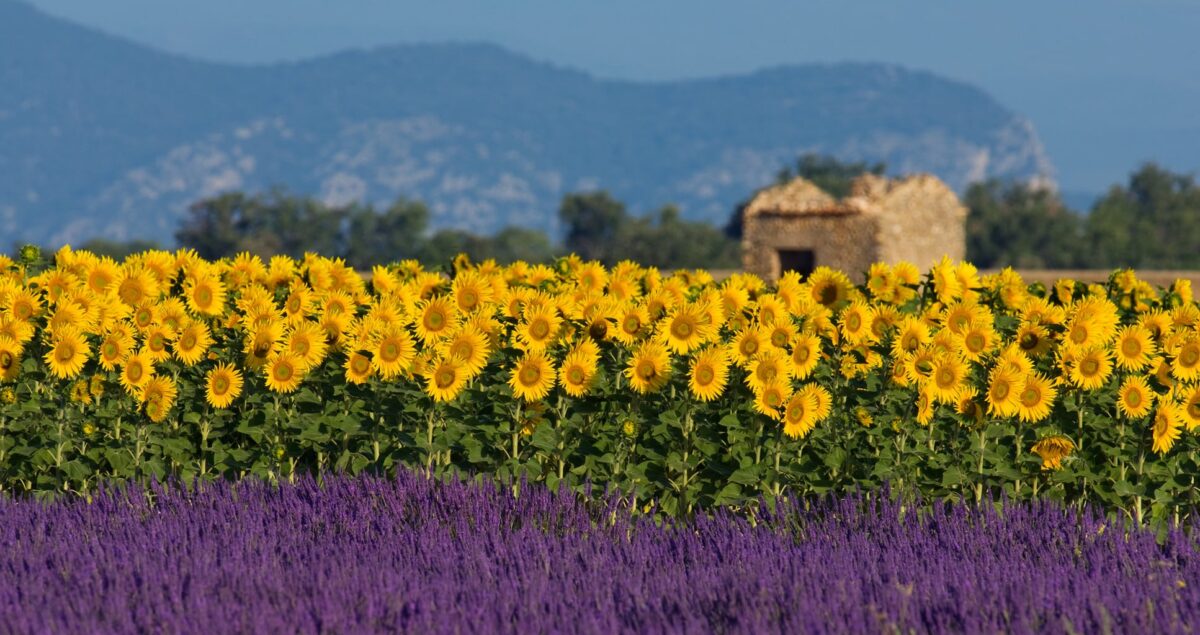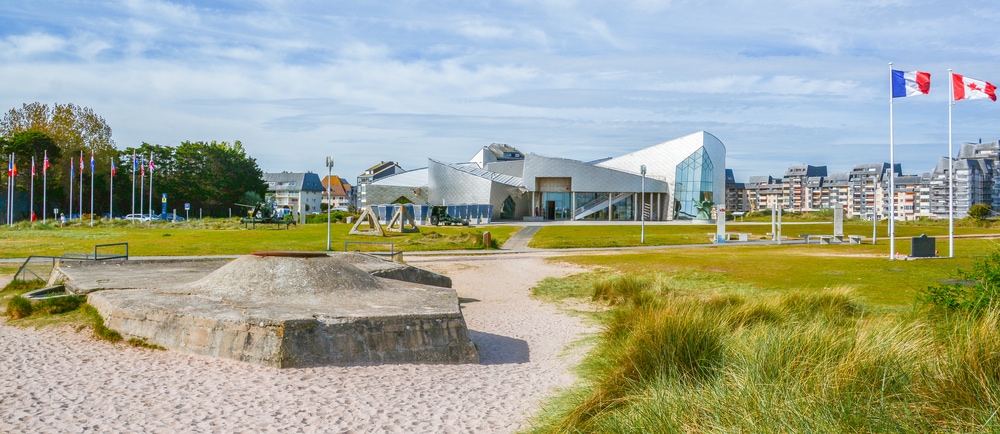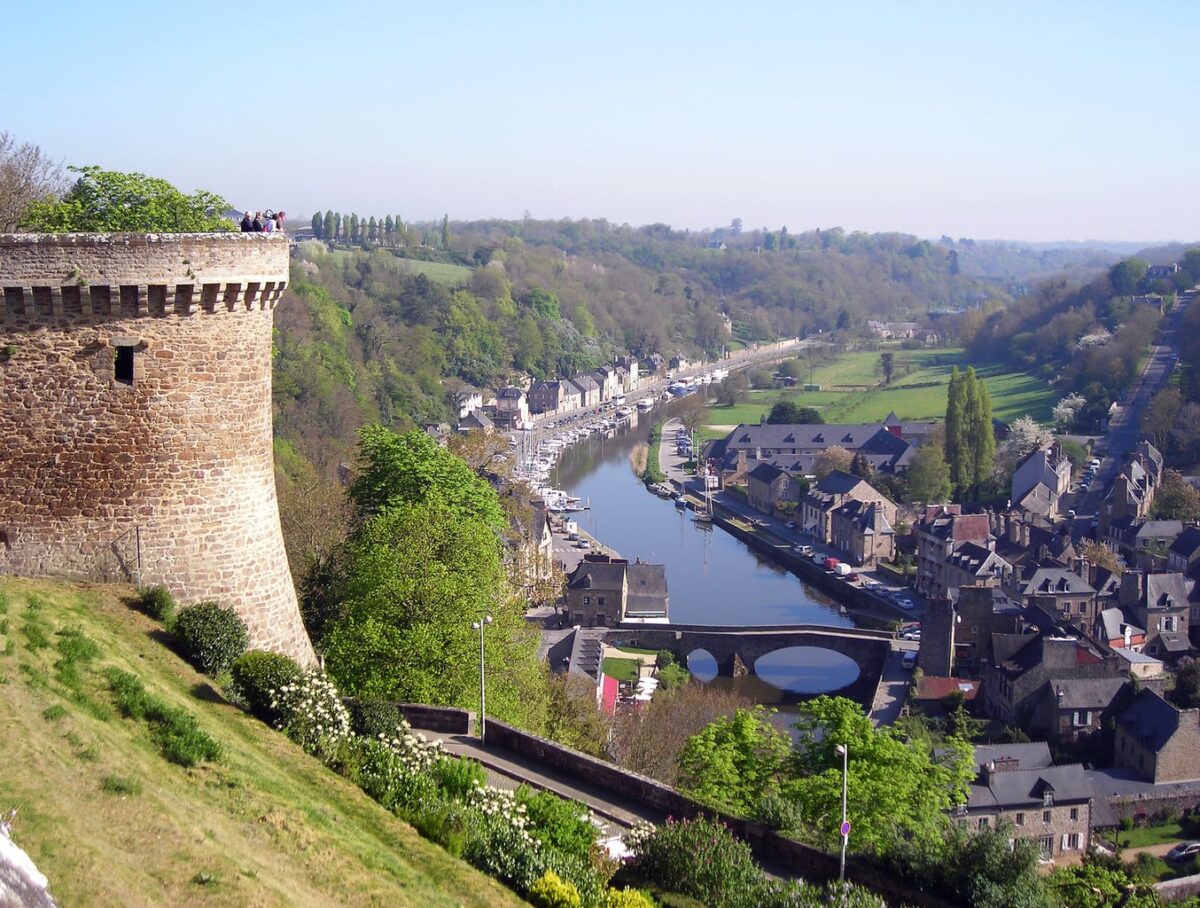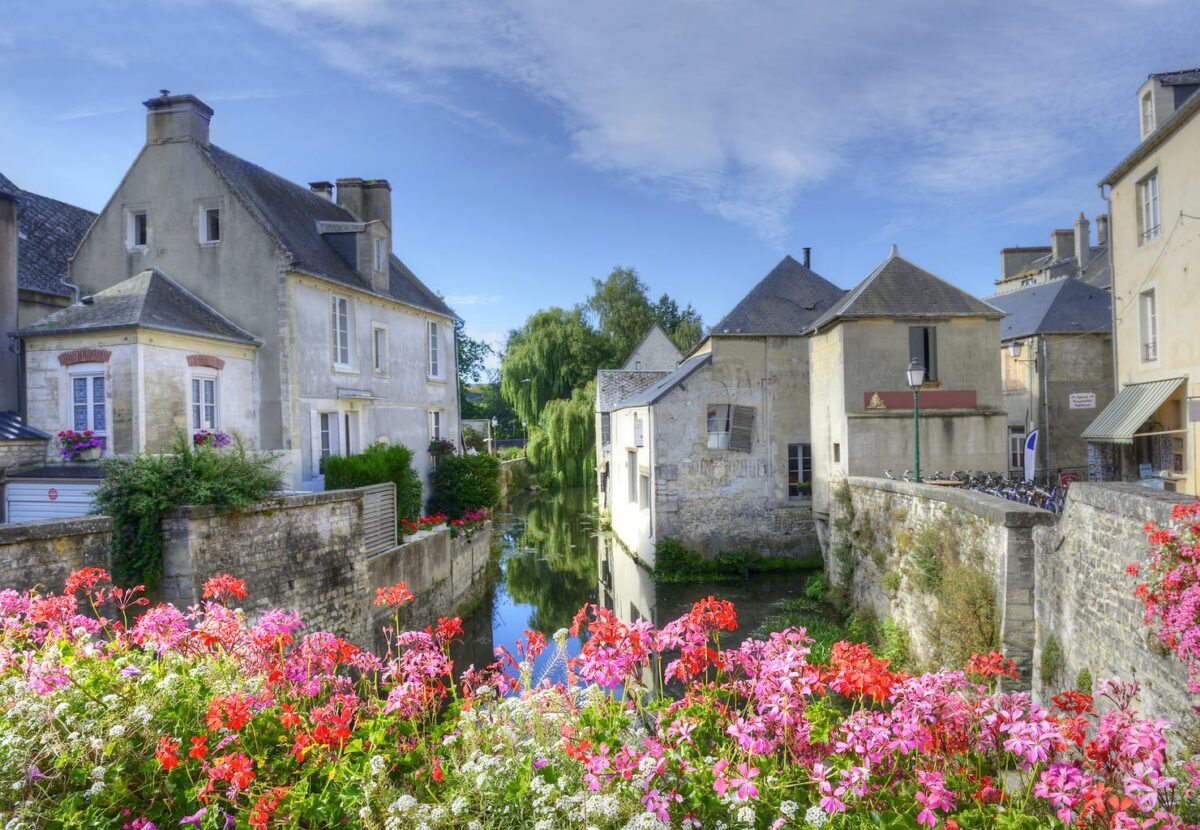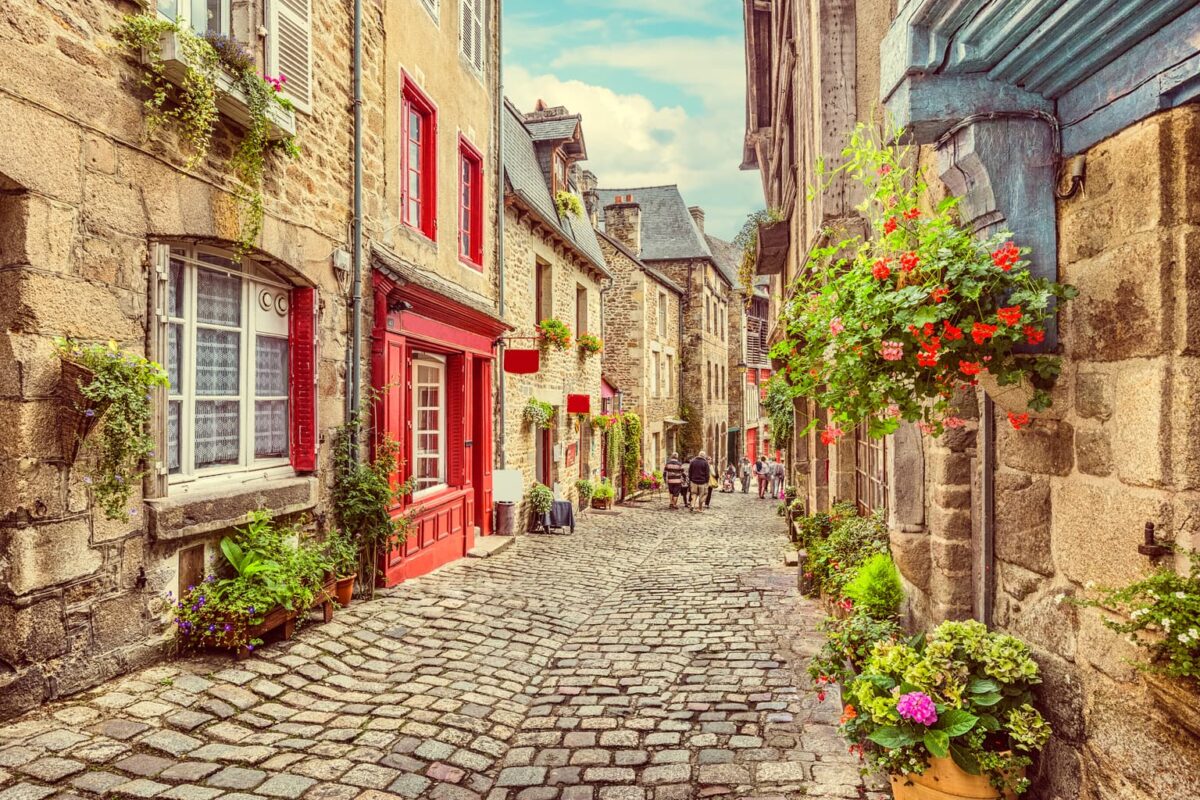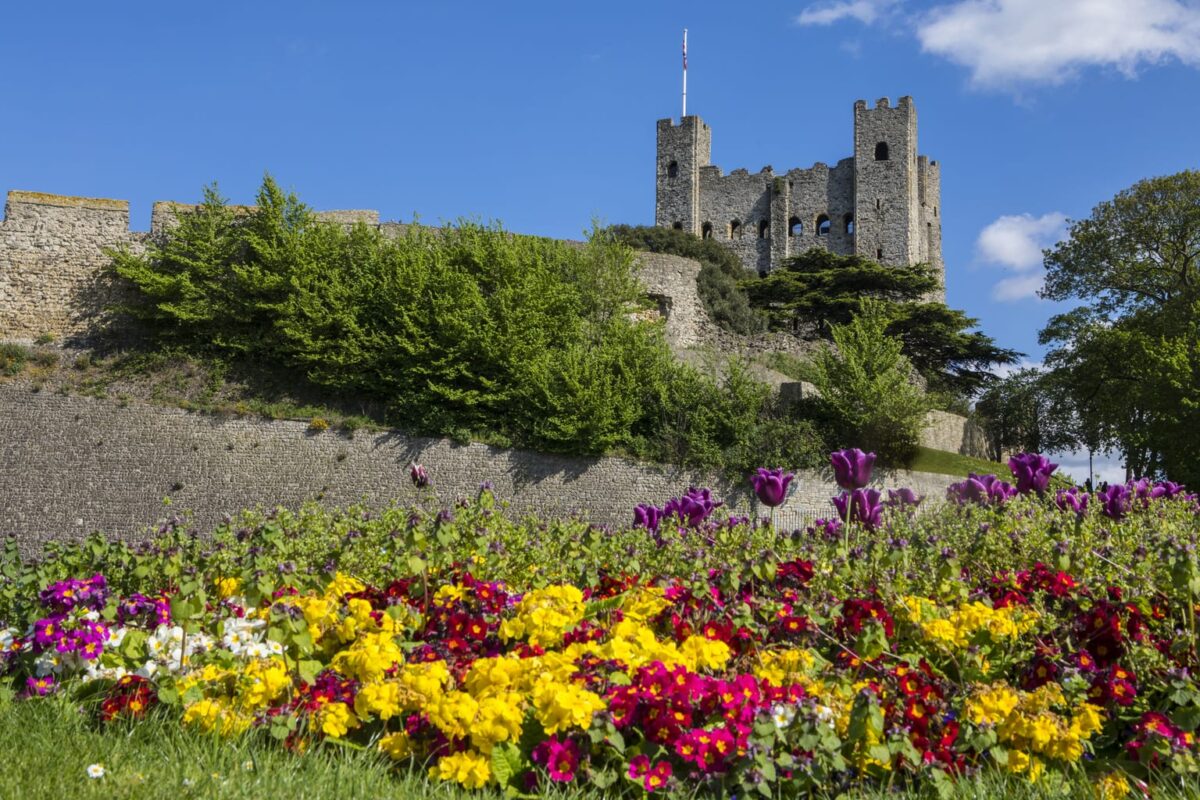Creating your Ultimate Itinerary for Paris
Creating your ultimate Paris itinerary really depends on how long you have to spend in Paris and of course, the cost as Paris is a very expensive city. I recently spent 5 days in Paris but as I’m currently living in France I plan to go back and see more of the city over the next year as it just can’t be seen and appreciated in such a short time.
I’m lucky enough to be living in Northern France in a small village called Lassay les Chateaux and I’ve been able to see many of the areas beautiful villages such as Rennes, the medieval charmer Dinan and had a chance to spend a few days in Bayeux. I’ve been to the beaches of Normandy and tasted the regional delicacies of Brittany while I’ve been housesitting here in the Mayenne.

I’ve been planning my Paris itinerary for over a year and have ensured that I have good walking shoes and a bag that protects my money and wallet. For those who haven’t been to France make sure you have some small change and bills in the currency of France which is of course the Euro before you arrive.
You can see a lot in Paris in 5 days and I say a 5-day itinerary for Paris because, with the travel times from North America, you pretty much lose 2 days travelling. But Paris is a huge city like London and you really need a lot of time to explore and just wander and that really isn’t possible in a massive city like Paris over five days. Besides, you need time here to relax and simply let Paris sink into your soul.
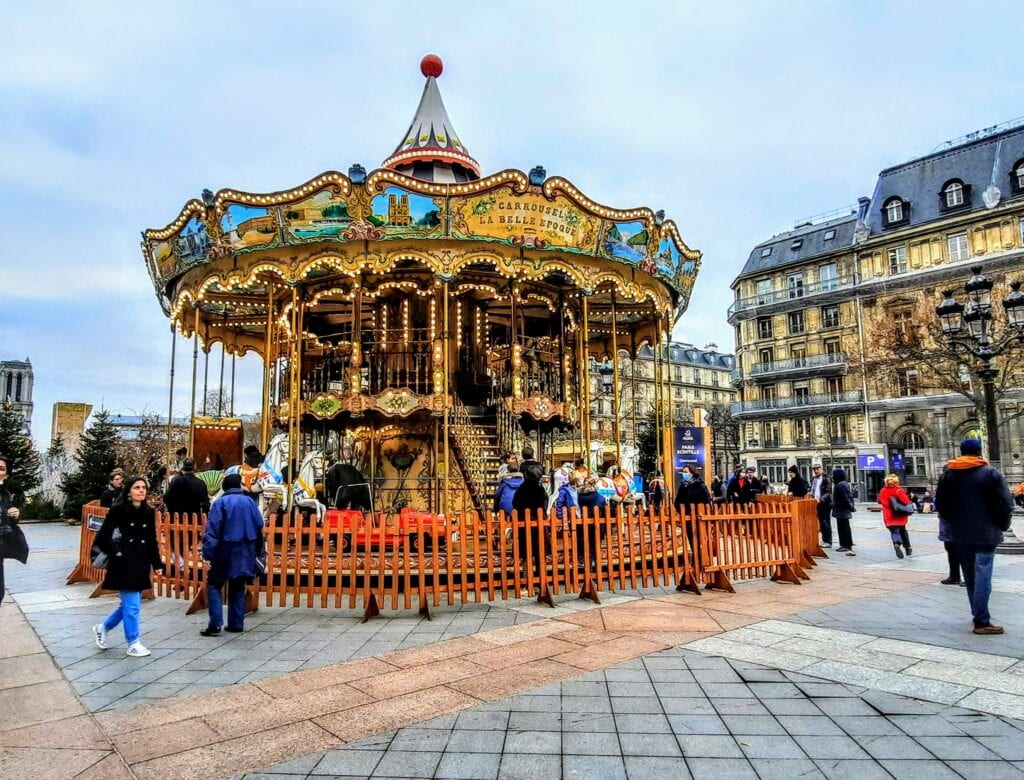
Since you can cram a lot into an itinerary for Paris it does require some planning. You can visit the most popular attractions but you should definitely book in advance. I have listed a huge selection of sites that were on my bucket list in this article, but I have to admit to not climbing the Eiffel Tower, nor did I go into the Louvre as it was Tuesday and they were bloody closed. So you see spending 5 days in Paris means accommodating what you want to see and what is happening in the city and truth be told what you can actually manage.
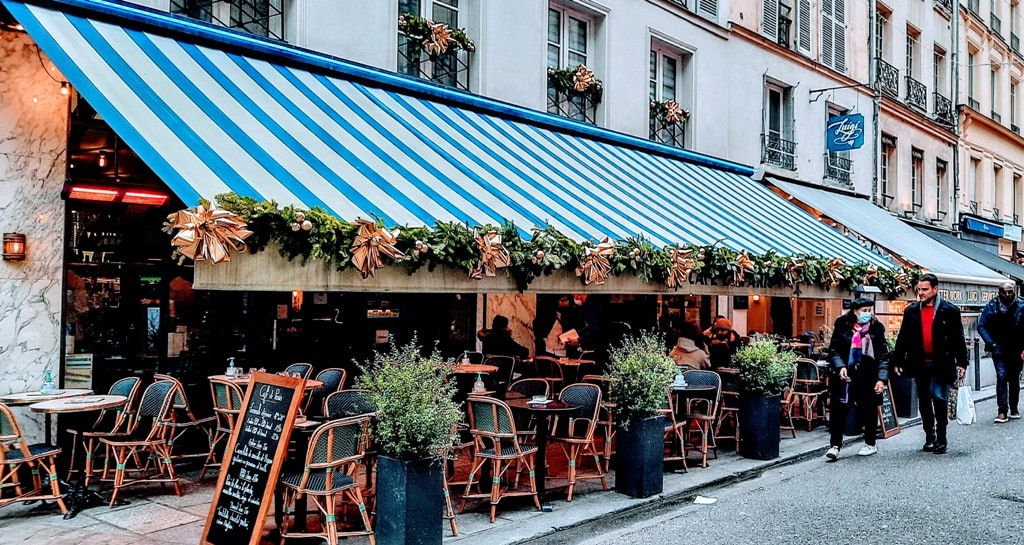
- Creating your Ultimate Itinerary for Paris
- When to visit Paris?
- How do I get from Charles de Gaulle Airport to Paris?
- Getting around Paris
- Tips for your Paris Itinerary
- Choosing your bucket list itinerary for Paris sites
- What to see on the Left Bank of Paris
- What to see on the Right Bank of Paris
- Ile-de-la-Cité
- What to see in Montmartre
- The final recommendation for your 5 days in Paris
When to visit Paris?
That’s obvious anytime is a good time to visit Paris but keep in mind that in the winter and early spring months the weather can be a little unreliable and it will probably rain.
Having said that the winter months with all the sparkling Christmas lights and gorgeous little Xmas Markets more than make up for the shorter days and colder weather.
It may be a little less crowded in the winter months as well which given the crowds in Paris may make visiting a little easier. But we went in the middle of a world pandemic in early December and the crowds were absolutely massive.

How do I get from Charles de Gaulle Airport to Paris?
The journey from the airport to Paris takes around an hour and it depends on what method you choose to get to your hotel. To get from Charles de Gaulle Airport (CDG) to the city centre of Paris, you have three transfer options, train, bus or taxi.
How much is the taxi from Charles de Gaulle to Paris?
Between Paris-Charles de Gaulle airport and Paris “right bank”: 53 euros. – Between Paris-Charles de Gaulle airport and Paris “left bank”: 58 euros. You will find the taxis at the taxi rank just outside the airport make sure you take a registered taxi as Paris has imposed set rates from the airport to the city centre to ensure tourists are not ripped off.
5 days in Paris are just about enough to get to know it a little. We took the Hop on Hop Off bus with a 2-day pass in order to get our bearings in this incredible city. This takes you around most of the big sites you may want to see like Notre Dame, the Eiffel Tower, Musee d’Orsay, Champs Elysee, the Arc de Triomphe. These hop-on hop-off tours really give you a chance to explore areas you don’t have to pay for and allow you to get a grasp on the layout of the city.
Xyuandbeyond is reader-supported. When you buy through links on our site, we may earn an affiliate commission. You can read my privacy policy here.
Getting around Paris
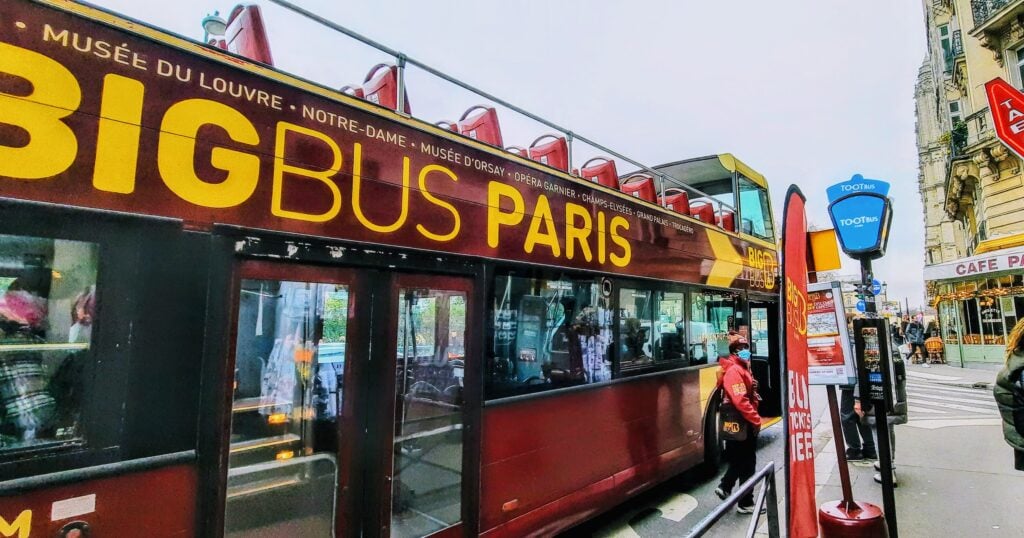
You have quite a few options when it comes to getting around Paris. The Hop on Hop Off buses run by the Big Bus and Tout Bus are great for giving you a tour of the city and helping you to figure out where the sites are that you must visit. It’s also helpful for just being able to jump off and take your photos and then hop back on again to another site if you don’t want to spend much time at a particular site. The average cost of these is around € euros for a 1-day ticket.
We also got tickets for the Batobus which is a hop on hop off boat that cruises the Seine that works the same as the buses a day pass for this was €17 euros per person. This was a really cool way to see Paris from the famous River Seine. We didn’t bother with a river cruise and a meal as they were pretty much budget-busting.

Both of the bus tour companies Big Bus Tours and Toot Bus pretty much follow the same routes and depending on the season there will be alternative routes or evening tours that you can also book. The tours may also include a cruise on the Seine for an additional cost. This is the general route of both of these tours and as you will see they do not go up to the Montmartre which is most definitely an area of Paris that is a must-see.
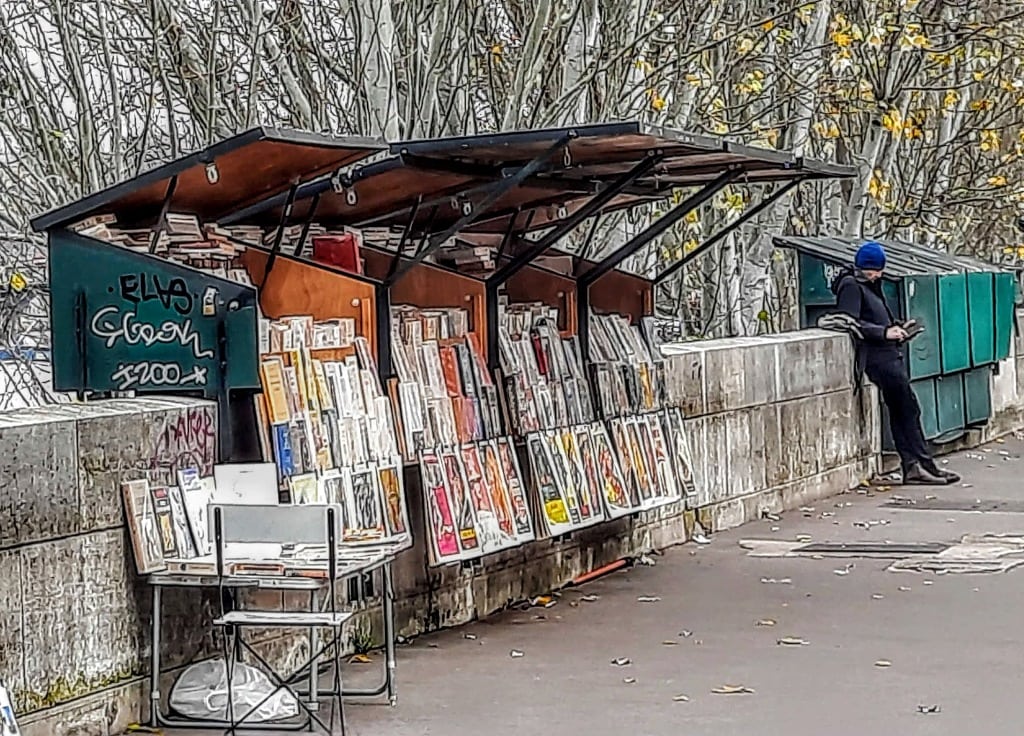
Tips for your Paris Itinerary
- Usually international flights from North America will arrive early in the morning and leave in the morning to head back. That means of course if you have booked a 7 day vacation in reality you only have 5 days in Paris due to flight times. Your first day will be spent finding your hotel, checking in and sorting out your luggage if check in time is later in the day.
- I recommend that you head to your hotel who will take in your luggage and hold it until check in time. That leaves you free to just wander for the rest of the day. Try to set your watch on Paris time when you are on your flight and adapt accordingly. That way although you may be tired you are now on French time.
- Bring comfortable shoes Paris means a lot of walking
- Wear layers that you can peel off if you get too warm
- Learn some fun facts about Paris and some Parisian history before you go
- Go up the Eiffel Tower at night leaving your day free to visit other attractions.
- Take a tour of Paris by night, see the lights of Paris twinkling from the River Seine, or enjoy an evening of dining and entertainment.
- Same for the Louvre go at the end of the day so the crowds are lessened somewhat.
- if you book your Eiffel Tower skip the line tickets or tickets for the hop on hop off bus make sure you book them for day 2 of your trip. Don’t forget that the bus tour takes 2.5 hours at a minimum to take the full tour and if you hop on hop off you will spend many more hours than this.
- Grab a baguette sandwich on the go. Most bakeries in Paris will do fantastic sandwiches that you can eat on the go. Not only does this save you money it saves you time as Paris eats slowly.
- France doesn’t do breakfasts – they say they do but don’t expect American pancakes or eggs and bacon. The French do a croissant and a very strong tiny coffee for their petit dejeuner. So be prepared. If you need a bigger breakfast some places may do an omelette or crepes.
- Speaking of coffee if you order a coffee in France expect a tiny espresso, order a café crème grande if you need a good hit of caffeine with milk.
- Don’t forget to always say bonjour when entering a shop or cafe and when asking for an item or ordering food a si Vous plait is always good manners.
My best Paris itinerary tip would be to figure out if you want to spend time in museums, find iconic french food cafes and restaurants, are you a history buff and want to see beautiful French architecture and buildings or do you want to find the best bakeries in Paris?
You see you can spend a full day in the Louvre if that’s your thing. You can wander the streets of Paris searching out those wonderful French foods, shop for designer delights it all depends on what you personally find the most exciting for your trip to Paris.
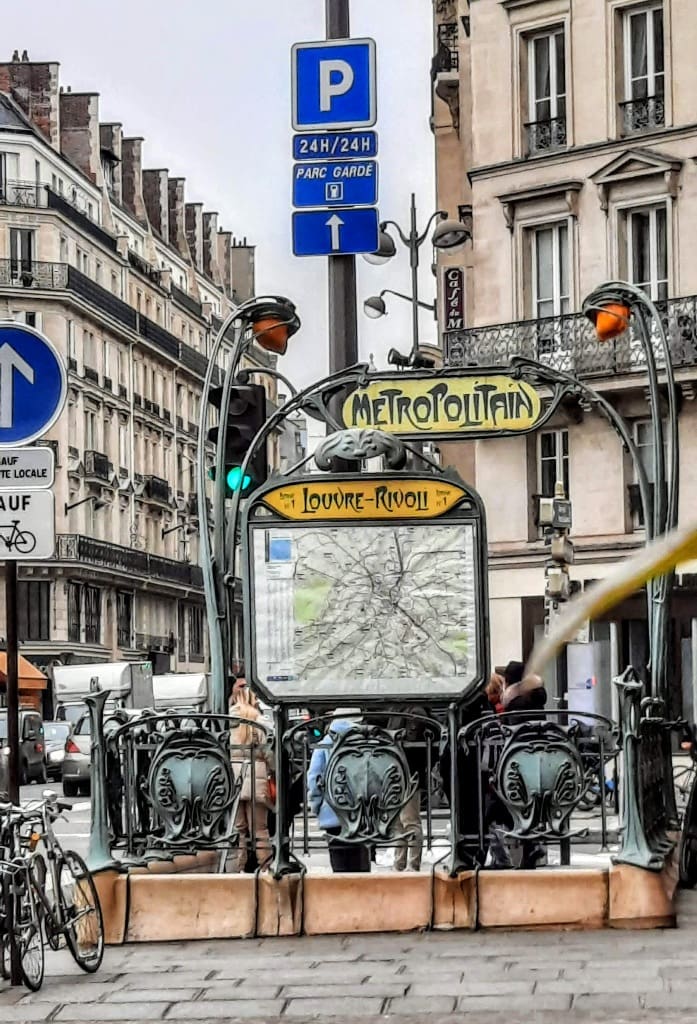
Creating a Paris itinerary is not easy so I suggest figuring out those sites that are a must-see. It doesn’t matter if you don’t like museums for example but taking some photos of the exterior of the Louvre and those pyramids is almost mandatory. You don’t have to climb the Eiffel Tower but you do need to get some iconic photos of it.
Choosing your bucket list itinerary for Paris sites
Now the order of this Paris itinerary is really up to you and a lot of it depends on where you are staying in Paris. It can get very confusing with the arrondissements but keep in mind #1 is the very centre of Paris with the areas circling out from there. Here is some basic information about what Parisian sites you can find in each area.
Left Bank – Rive Gauche
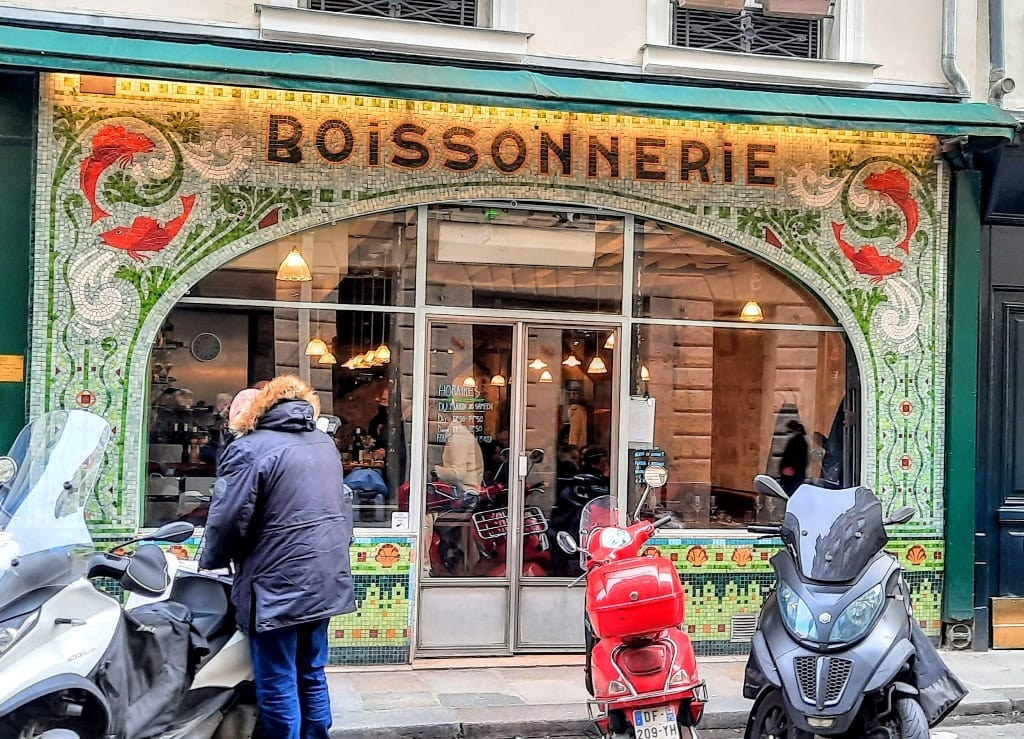
The left bank faces west and runs south of the Seine River. It encompasses 6 arrondissements including: 5,6,7,13,14,and 15. The Rive Gauche includes the bohemian Latin Quartier, Saint Germain des Pres with the famous cafes Deux Magots and Café Flor along with the Sorbonne and the Pantheon and of course the Eiffel tower.
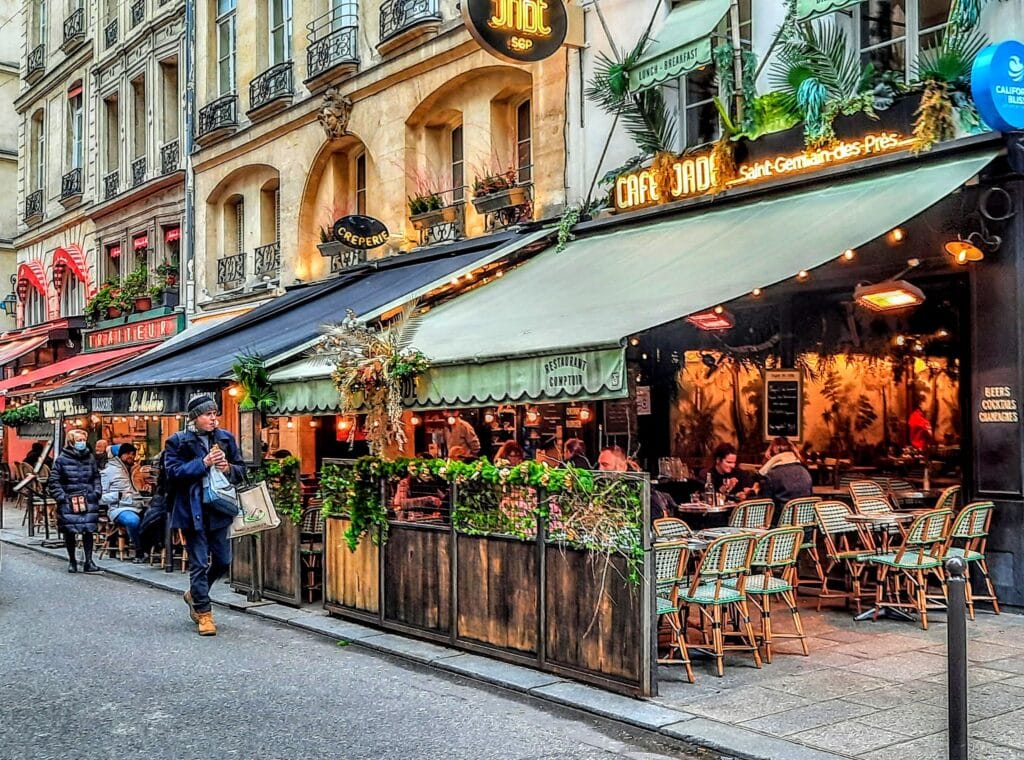
Right Bank – Rive Droite
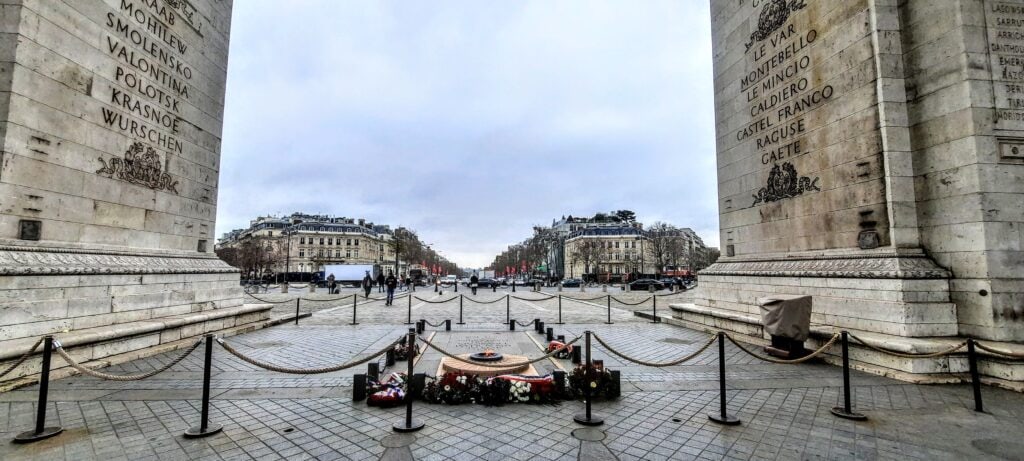
The right bank contains the 1,2,3,8,9,10,11,12,16,17,18,19,and 20th arrondissements. It is home to some of Paris’ greatest museums including the Louvre, Musée de Art Moderne, and Musée de l’Orangerie.
Île de la Cité
The Île de la Cité is the island in the River Seine in the centre of Paris. It is the home of one of the most famous landmarks in France, Notre Dame, the royal chapel of Sainte-Chapelle, as well as the city’s first hospital: the Hôtel-Dieu. It is also the site of the city’s oldest surviving bridge, the Pont Neuf.
It is also home to the Prefecture de Police, and the Palais de Justice, The Mémorial des Martyrs de la Déportation, a memorial to the 200,000 people deported from Vichy France to the Nazi concentration camps during the Second World War, is located at the eastern end of the island.

We decided we wanted to stay in the Latin Quarter of Paris we hoped to find a hotel that was close to the Seine and within walking distance of many of the sites that were on our bucket list. We found on Booking the Hotel Quartier Latin which turned out to be just perfect for us.

The Hôtel Quartier Latin was located on the rue des Ecoles and it was small but well within budget at just over 100 euros a night. We had a lovely balcony from which we could spot the cranes at Notre Dame. We didn’t take the breakfast option as there was an amazing boulangerie across the road with great coffee and croissants.

What to see on the Left Bank of Paris
- Eiffel Tower
- Shakespeare and Company
- Musee d’Orsay
- Pantheon
- Luxembourg Gardens
- Montparnasse Tower
- Catacombs
- Saint-Germain-des-Prés
- Café Flor
- Deux Magot
- Procope
- Food Tours of the Left Bank
Eiffel Tower
This may surprise some folks but the Tower is actually on the Left Bank of the Seine.
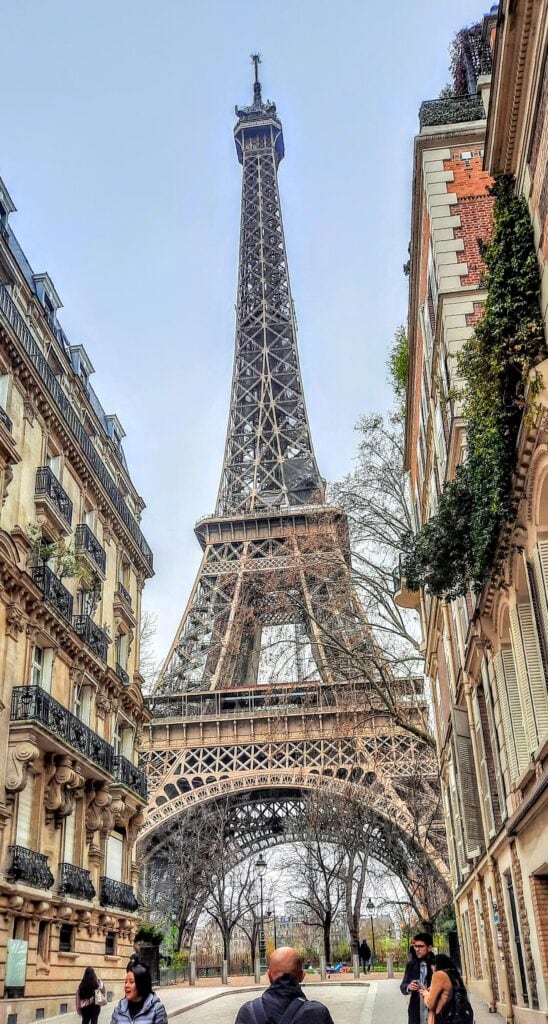
Built for the 1889 World Expo the tower was the tallest place in Paris until 2004. You can either take the stairs to the top or there is an elevator there are 1665 steps from the esplanade up to the top of the Eiffel Tower, but the stairway from the 2nd floor to the top is not open to the public.
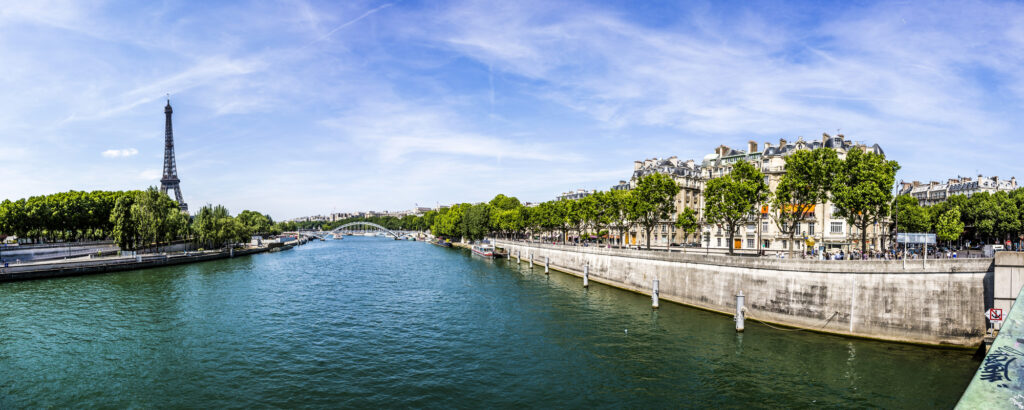
Shakespeare and Company
Shakespeare and Company is a famous English bookstore with views of the Seine and Notre Dame. The building was originally a monastery dating from the 17th century but there is little of that to be found. The building itself is a major tourist location so you will find yourself neck-deep in cruisers and tourists following their guides with flags. There is a café attached to the bookshop where you can grab a coffee and a muffin for breakfast before you begin your day.

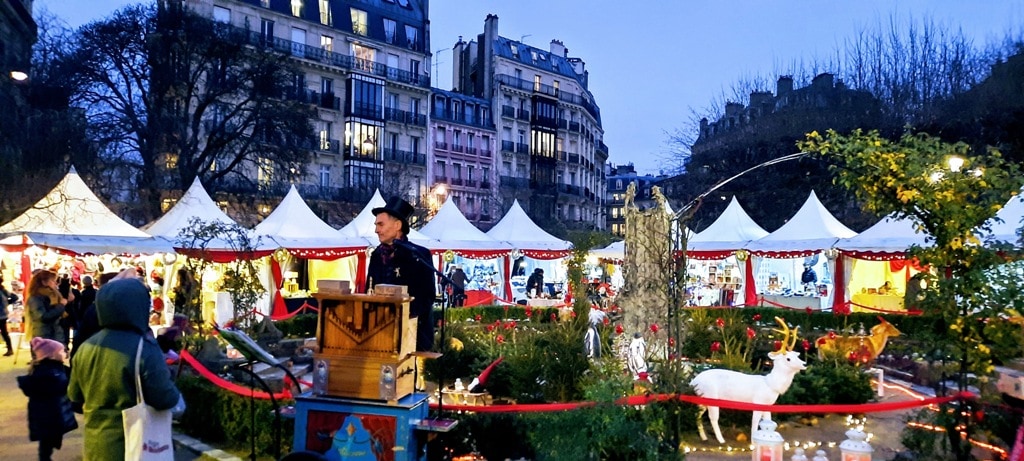
Musee d’Orsay
One of my favourite museums in Paris the Musee d’Orsay is full of impressionist artwork from Renoir, Monet, Manet and Van Gogh and it often has special exhibits. The Museum opens at 9:30 and closes at 6 pm but on Thursdays, it is open until 9:45. As usual in Paris, it is closed on Mondays. I would estimate at least 2 hours to visit the museum.
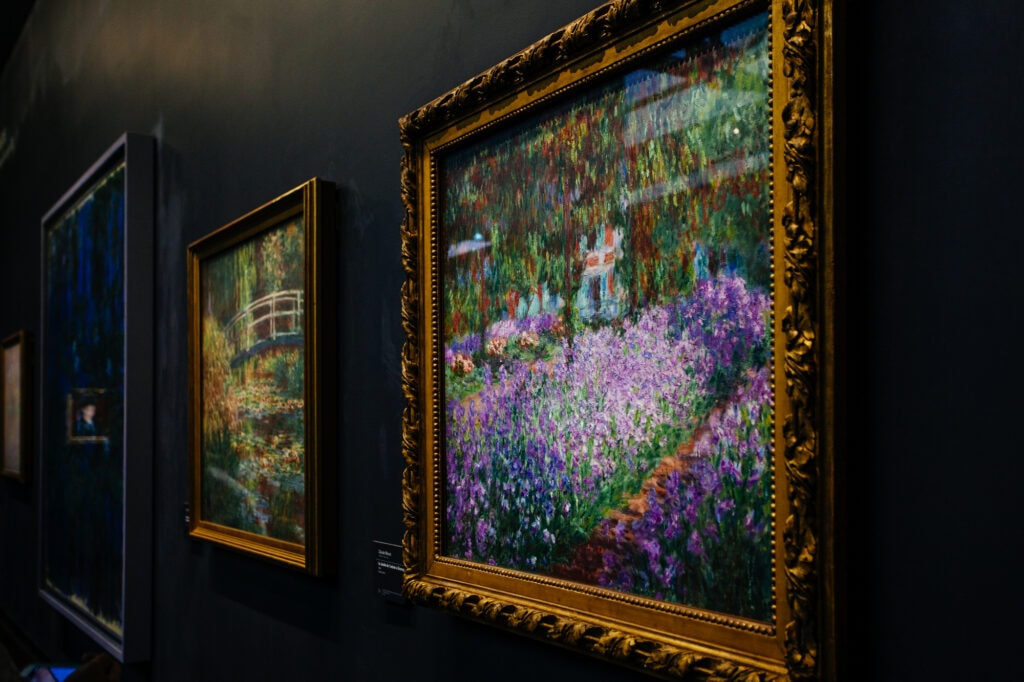
The Pantheon
The burial ground of some of Frances’s most famous men there has been controversy surrounding this monument modelled on the Roman Pantheon. Until very recently only men were allowed to be buried here the carving above the entrance says it all

“AUX GRANDS HOMMES LA PATRIE RECONNAISSANTE”
(The homeland is thankful to these great men)
Thanks to the women of France protesting this great error there are finally now 5 women interred within the Pantheon’s mausoleum. Marie Curie, Geneviève de Gaulle-Anthonioz was a heroine of the French Resistance, Germaine Tillion was a French ethnologist and member of the Musée de l’Homme resistance network in Paris during World War II. Simone Veil, the French Holocaust survivor and pioneering political activist, Sophie Berthelot was the first woman to be buried in the Panthéon she is buried with her husband, Marcellin Berthelot, who was world-renowned for his achievements in the field of chemistry.
Finally this year (2021) Josephine Baker an American-born Black dancer and civil rights activist who in the early 20th century became one of France’s great music-hall stars was interred in the Pantheon.
Luxembourg Gardens
You can walk from the Pantheon to the Luxembourg Gardens which were built for Maria de’ Medici in the 17th century. Within the park look for the 20 statues of French Queens and the Medici’s fountain.
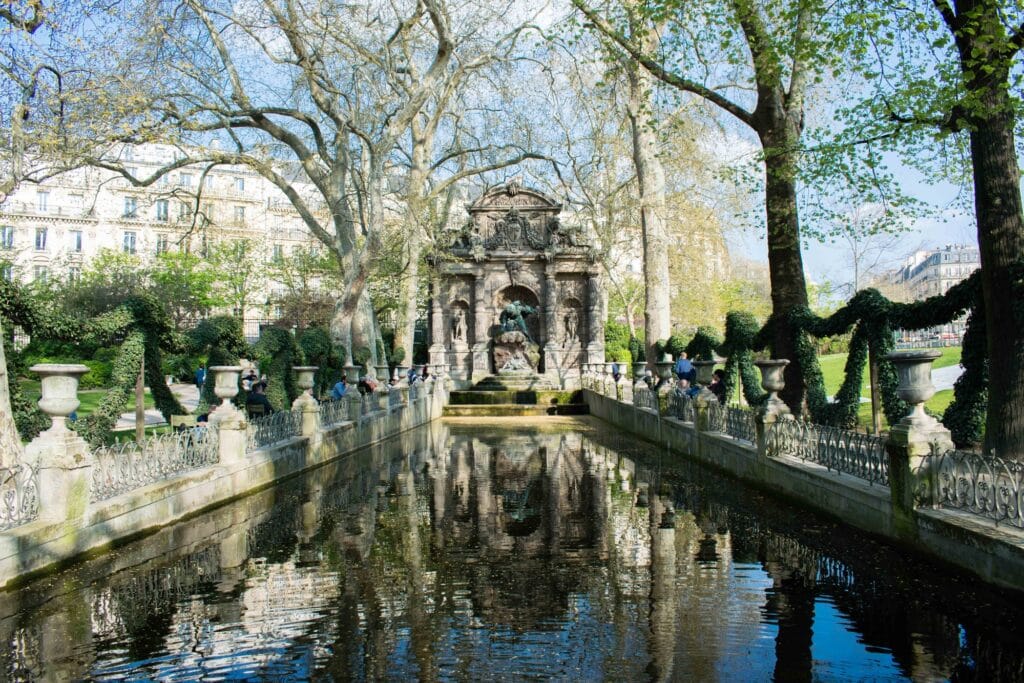
Montparnasse Tower
The Tower is Paris’s second-tallest skyscraper and it dates back to the early ’70s. There is a viewing platform at the top of the tower providing stunning views across Paris. It is also right beside the Montparnasse Garde or train station.
Catacombs
Paris’s famous catacombs are located a short walk from the Montparnasse Tower. The catacombs were originally a limestone mine but by the end of the 18th century was used as a mausoleum to hold the bodies of Parisians when the cemeteries couldn’t take in any more bodies.

The Catacombs are 20 metres below street level and for those with mobility issues, there are 131 steps to go down and 112 steps to climb up.
Saint-Germain-des-Prés
A walk-in the Saint-Germain-des-Prés area is a must if you are looking for bohemian Paris. This village-like district with its mix of culture and heritage, right in the centre of Paris, is well worth discovering. Synonymous with intellectuals, beautiful boutiques and historic monuments you can wander the area for hours. This is the area to find the famous cafes where the great iconic writers, artists, poets and intellectuals hung out. You will spot fabulous little boutiques for shopping, great restaurants and what a place for people watching.

Café Flor
Dating back to the 1880’s Café Flor became a famous salon for folks such as Ernest Hemingway, Jean-Paul Sartre, and Simone de Beauvoir, who all liked to visit Deux Magot as well. Jean-Paul Sartre arrived at Café de Flore in 1941 encouraged by his wife Simone de Beauvoir the couple made the café their offices during the day.

Deux Magot
Les Deux Magots café can be found in the Saint Germain des Pres once the meeting place of France’s literary and intellectuals it is now a very popular tourist attraction. It sits on the corner of an incredibly busy and noisy Boulevard Saint Germain which when you see all those iconic Instagram accounts you think what a lovely place for a coffee.

I’m pretty sure its past patrons that included Simone de Beauvoir and Jean-Paul Sartre, and Ernest Hemingway, Albert Camus, Pablo Picasso, James Joyce, and Bertolt Brecht enjoyed a much quieter time.
The Deux Magots literary prize has been awarded to a French novel every year since 1933.
Café Procope
Café Procope claims to be the earliest café in Paris dating back to the 16th century. It was the first literary cafe in the world and the oldest cafe in Paris which is still running and at the same location. Some of the famous names you may well recognise that used to frequent this historical cafe include Voltaire and you can see the table that he always sat at, Rousseau, Victor Hugo, and Balzac.
The Café also holds many historical objects such as Napoleon’s cocked hat.
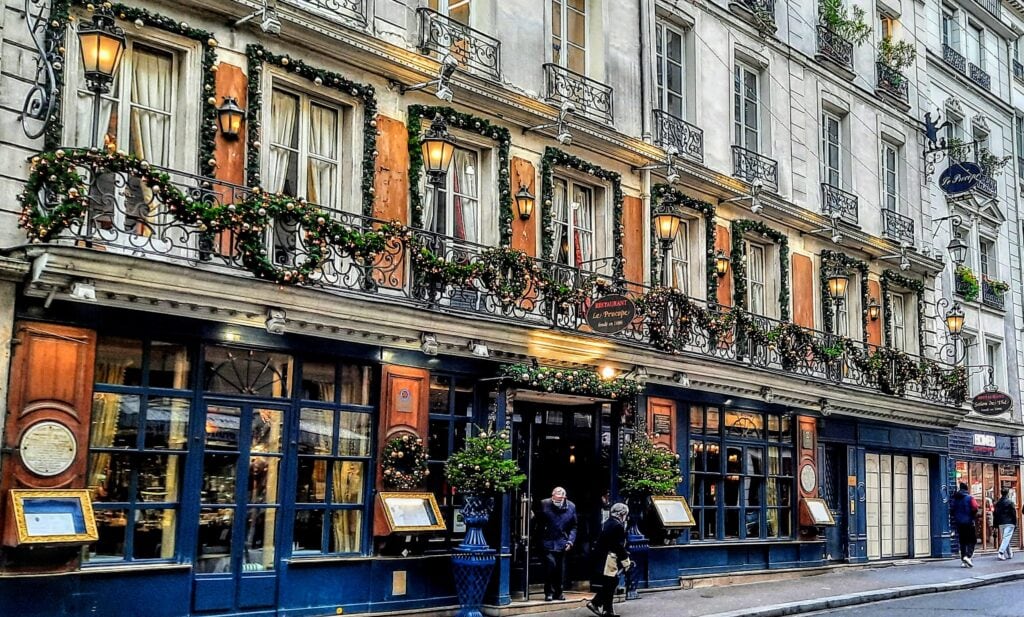
Food Tours of the Rive Gauche
Visit the best local master artisans in the charming neighbourhood of Saint Germain des Prés on a Get your guide food tour. Taste the best food in Paris in the oldest neighbourhood of the city. You will get to taste the best of the area with boulangeries, fromageries, fine patisseries and much more.

Explore the Latin Quarter Nightlife
The Latin Quarter by night tour hits a couple of the nightlife high spots in the quarter with a local guide you will visit 3 fun venues, with drink specials on offer at each location and see how the French party at night.
Classic Gourmet Food tour
Get Your guide has scouted out the most authentic eateries specializing in all the gourmet French classics you’ve been dreaming of tasting. This tour leads you through the winding streets and picturesque alleyway of the Latin Quarter and the 5th Arrondissement. This walking food tour is perfect for tourists looking for a way to explore and taste their way through Paris off the beaten path.
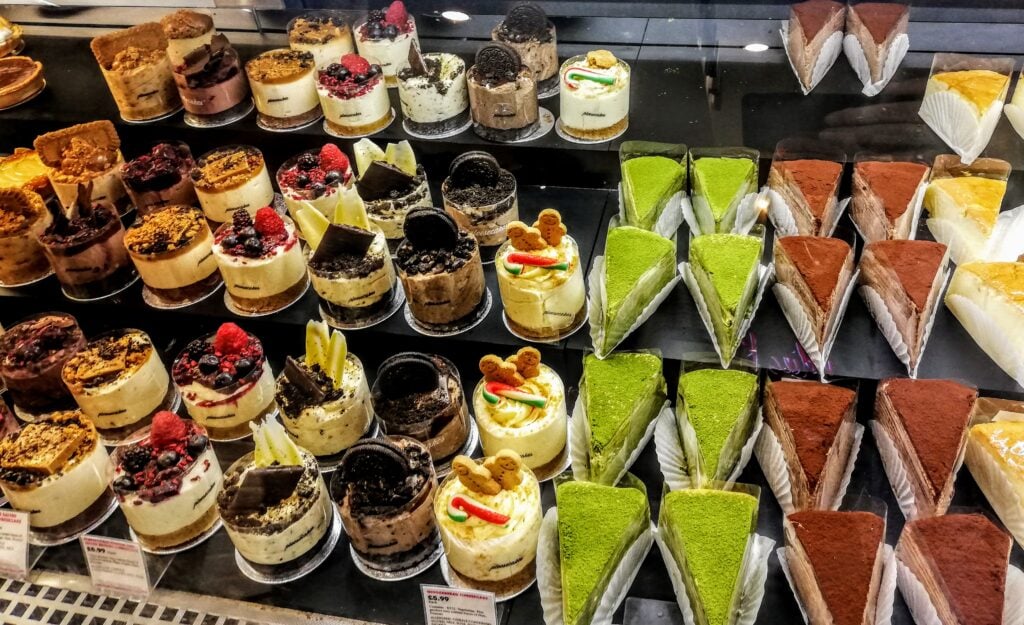
Flavorful food specialities are served from 5 of the following venues: • La Fromagerie: A myriad of the best French cheeses carefully selected by expert fromagers • Creperie Oroyona: Serving up delectable crepes in the Latin Quarter • Anthony Bosson’s L’essential Boulangerie: Talented young baker taking the baking world by storm • Jeff de Bruges Chocolaterie: Decadent chocolates and other sweets abound in this delightful shop • Le Berthoud: Charming wine bar with a full selection of French wines • Bar Saint Hilaire: Sample saucisson, tartine and other tastings along with a glass of French wine in this relaxed local spot.
Chocolate Food Tour
Oh, the joys of chocolate – a 3-hour gourmet stroll in the famous Saint Germain des Prés neighbourhood. In total, 8 tasting stops will await you along this gourmet route. You will begin with a visit to Debauve & Gallais, where you will be seduced by their chocolates as Marie Antoinette did in 1779. Since then, the love of chocolate in Paris, especially in this district, expanded. Some of France’s best pastry and chocolate chefs, known for their chocolates and macarons such as Pierre Hermé, Patrick Roger, Yannick Lefort and many others, settled in Saint Germain des Près.
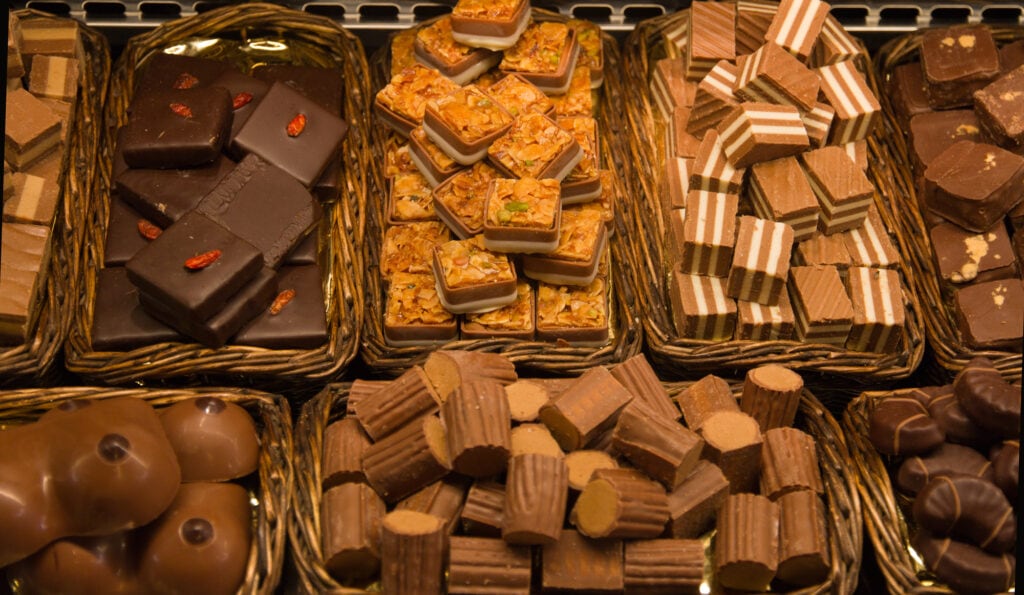
You will also tread the cobblestones of the charming rue de Buci and contemplate one of the institutions of Paris, the Café de Flore. During this visit, you will taste chocolates, macarons and pastries. Your guide will teach you everything there is to know about these sweets while enjoying a cup of tea, coffee or hot chocolate.
What to see on the Right Bank of Paris
The Right Bank of Paris contains a lot of sites that will be on your Paris bucket list so pick and choose carefully and remember that 5 days in Paris is not enough so you will be back.
- Place de la Concorde
- Tuileries Garden
- Champs-Elysées
- Arc de Triomphe
- Champs de Mars
- Louvre
- Opera Garnier
- Galleires Lafayette
- Samairtaine
- Palais-Royal
- Pompidou
- Trocadero
- Food Tours
Trocadero
Many think that the Trocadero is a nightclub in Paris lol but it is in fact an expansive complex of museums, sculptures, gardens and fountains located directly across from the tower with absolutely stunning views. The buildings you see are the Palais de Chaillot, which houses museums dedicated to maritime history,
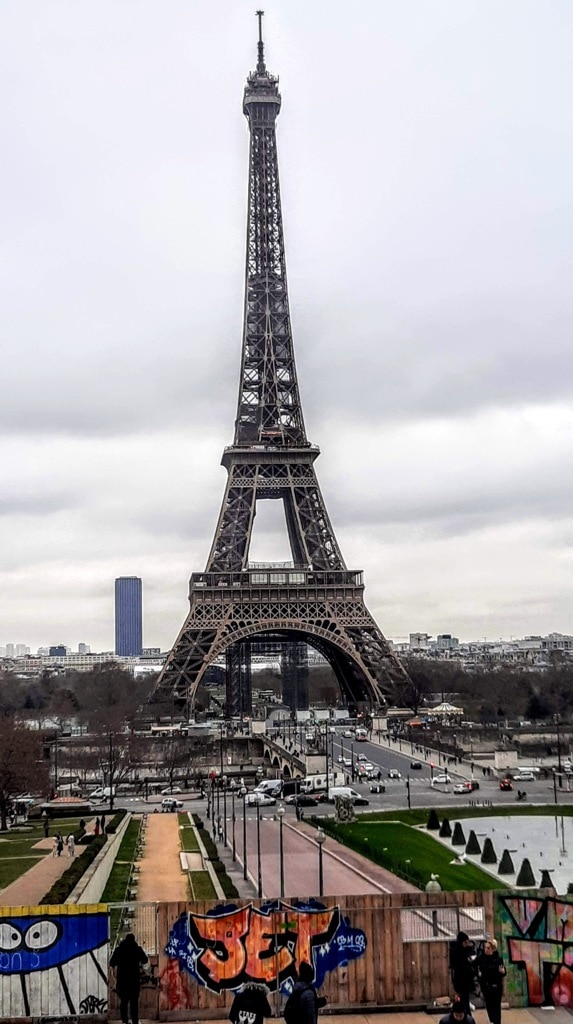
In front of the Palais de Chaillot are the magnificent Trocadéro Gardens. Built for the 1937 World’s Fair in Paris, the gardens align perfectly with the base of the Eiffel Tower.
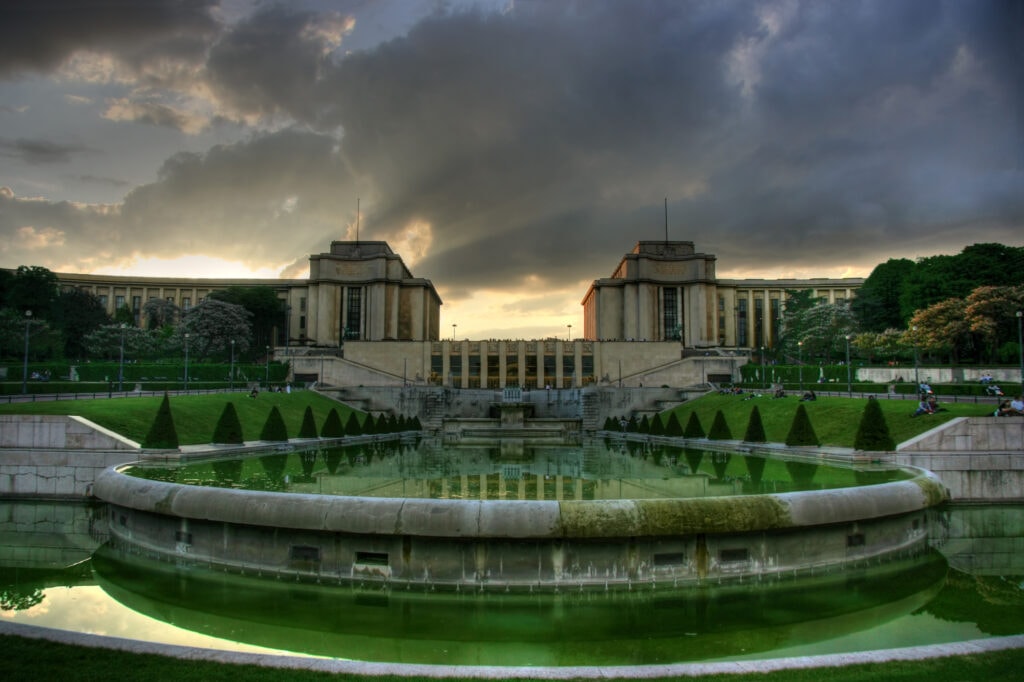
Champ de Mars
Champ de Mars park was first opened in 1780, next to the École Militaire. This gorgeous park is what you see when you look at the iconic Eiffel Tower views, the trees that line its paths, the benches where the French and the tourists stop to admire the tower and enjoy a Parisian picnic.

Place de la Concorde
The Place de la Concorde is Paris’ largest square and you will pass through it when heading to the Champs-Elysées. During the infamous Revolution, it was called Place de la Révolution. It’s the square where the guillotine stood and executions took place, including those of King Louis XVI and his wife Queen Marie Antoinette.
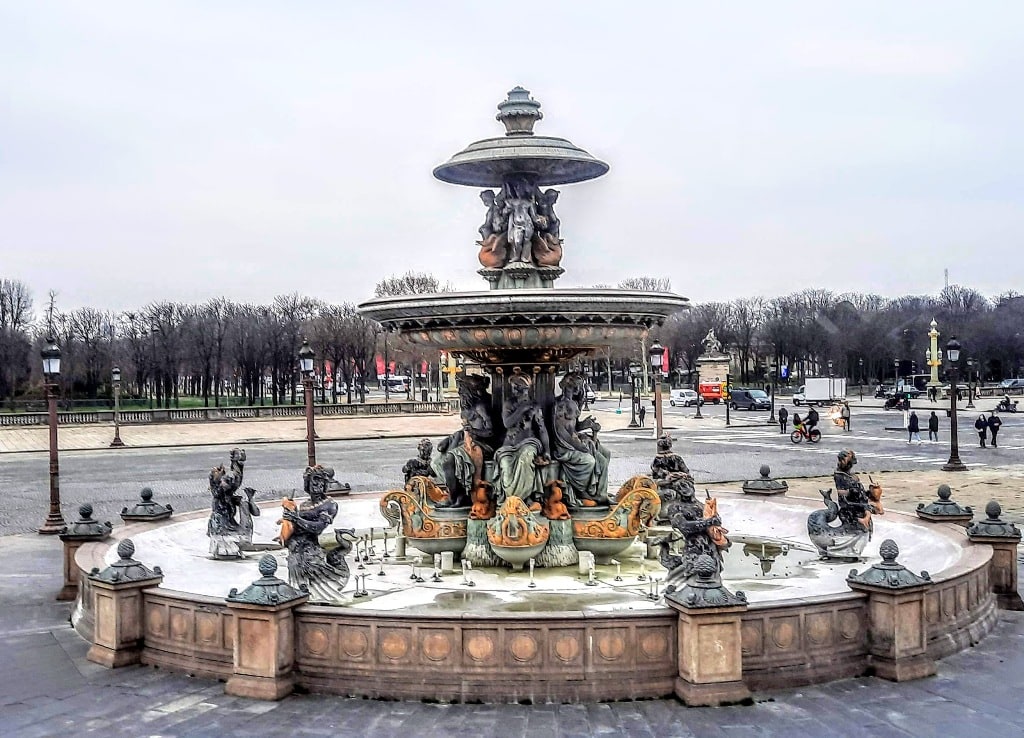
Located in the square you will see a fountain that dates back to the reign of Louis-Philippe and an obelisk taken from the entrance of Luxor Temple in Egypt.
Tuileries Garden
The Tuileries is found right at the end of the Champs-Elysées. These gardens were created by the same man who designed the Versaille Gardens.
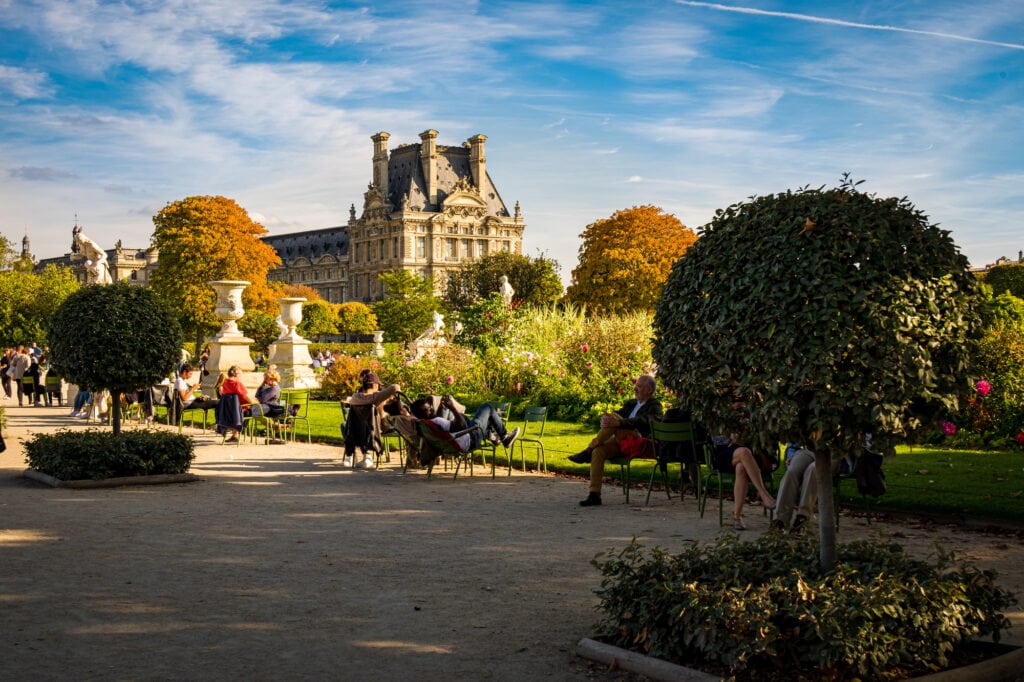
Champs-Elysées
The Champs-Elysées run all the way from the Arc de Triomphe to Place de la Concorde. If you have ever dreamed of shopping in Paris this may be one boulevard that has caught your imagination.
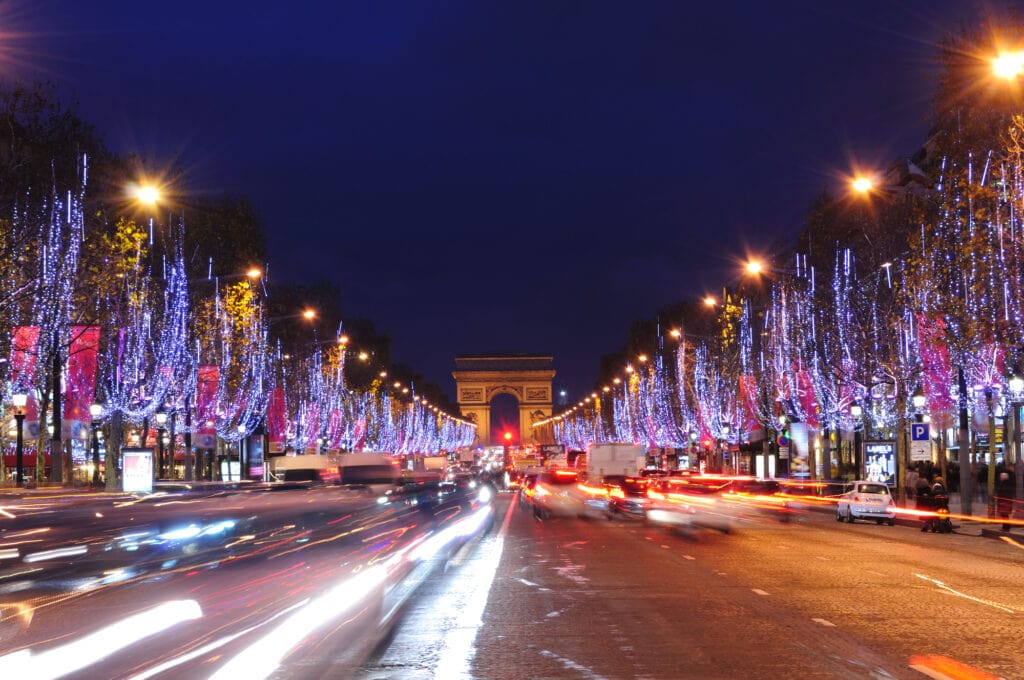
For me it was a total disappointment, it is a beautiful wide street and in the evening the trees lining the boulevard sparkle with golden lights which are simply beautiful.
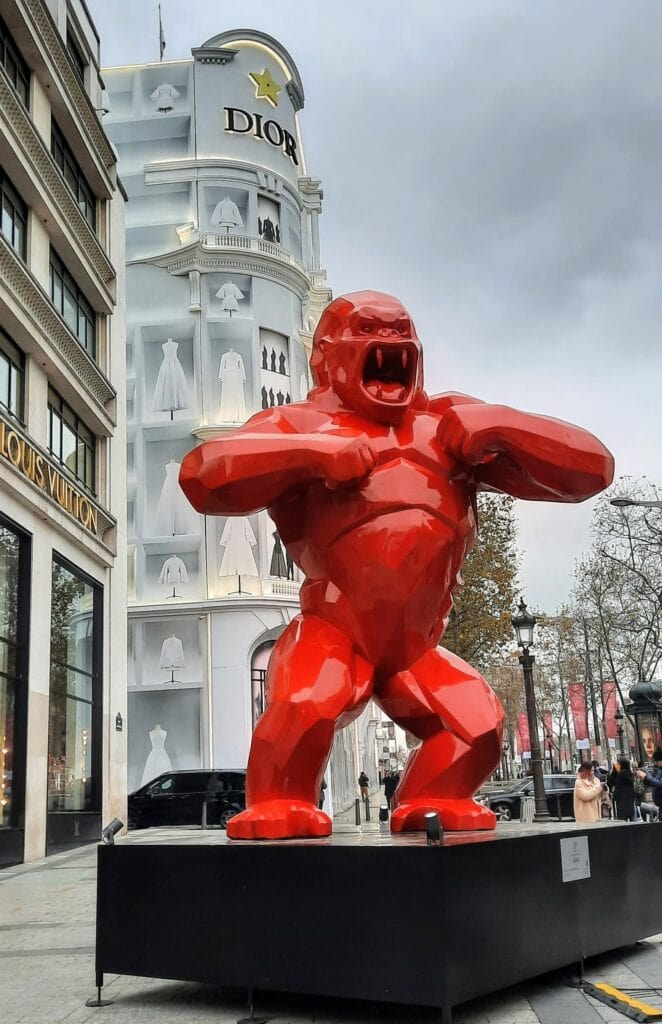
However, during the day the street is rather dirty with many cracked and uneven paving stones. I expected gorgeous, immaculately dressed Parisians popping in and out of designer boutiques but what I found was masses of tourists eating at McDonald’s.

Arc de Triomphe
Now having been unimpressed with the Champs-Elysse sitting on the upper deck of the bus you can’t imagine the thrill of seeing the Arc de Triomphe through the front window – now that was iconic.
If you have 5 days in Paris, this is a view you can’t miss. You can also take the underground tunnel walkway over to the monument and go up it if you wish.
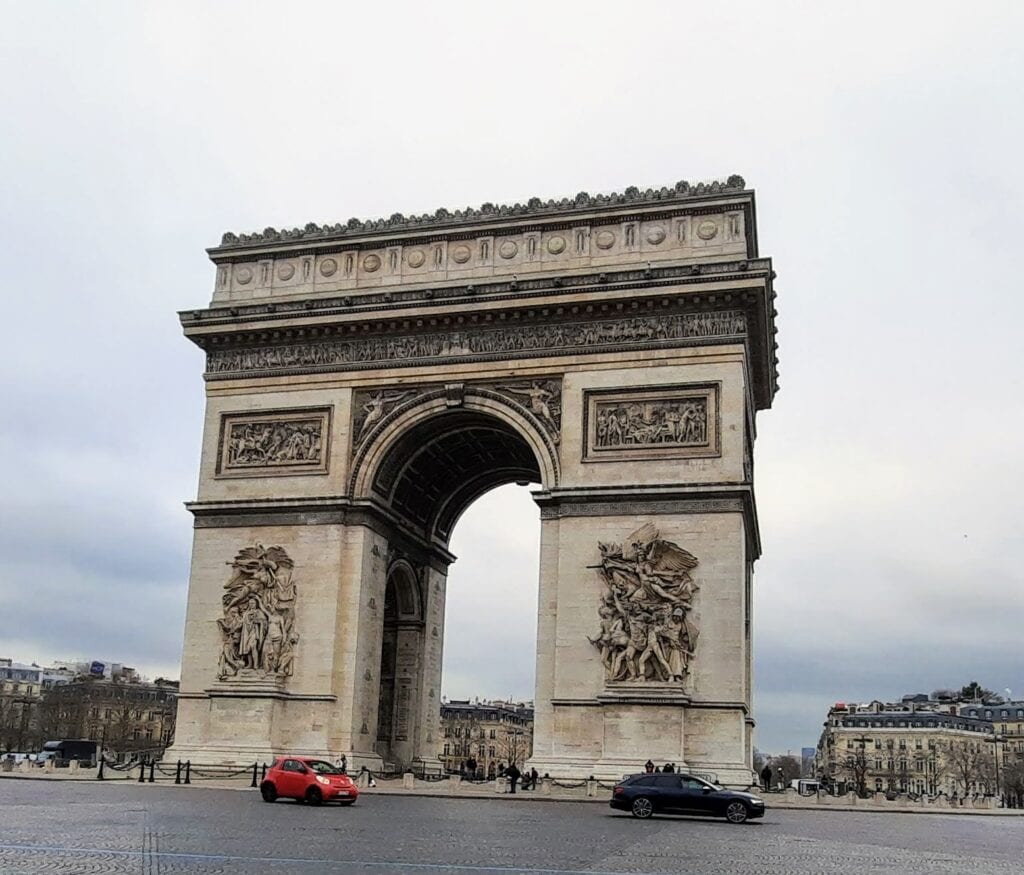
The Arc was designed and built to honour and pay respect to the many French people during the Revolution and the wars that followed. Many names are carved into the supports of the Arc and you can see the grandeur of the monument close up, while you marvel at how the traffic seems to flow dangerously around the area.
Louvre
Another absolutely iconic Parisian location is of course the Louvre, it is closed on Tuesday but you will spot dozens of Instagram influencers making their little videos, changing clothes and poses for the camera which is quite entertaining.

The Louvre is quite likely the largest museum in the world I was astounded at the size of the buildings and intimidated by its vastness. This was actually built as a fortress and converted in the 1700s to a museum. Here of course you will see Da Vinci’s Mona Lisa and much more. Be prepared though and buy your tickets in advance as the museum is often sold out and the lines are incredibly long.
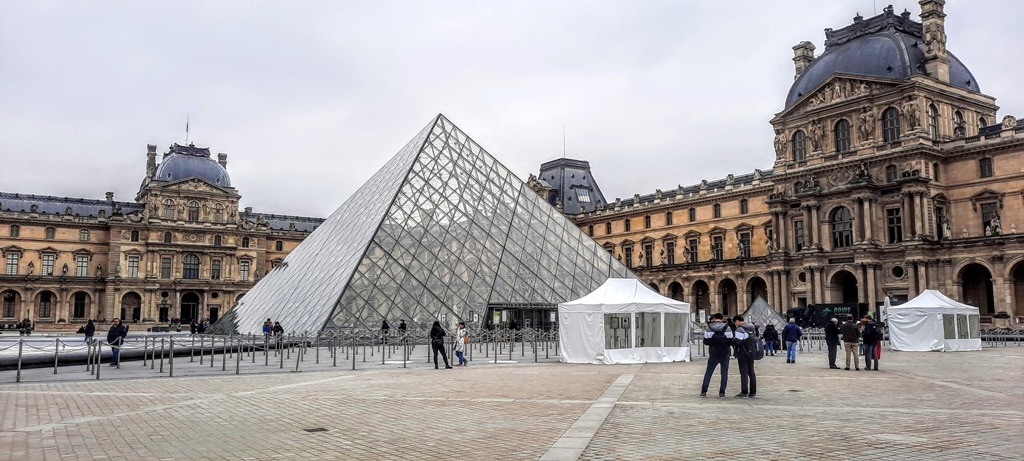
Palais-Royal
Once the home of that infamous man Cardinal Richelieu the Palais-Royal is now the Ministry of Culture and the seat of the Constitutional Council.

Centre Pompidou
One of the world’s most famous modern art museums the Pompidou holds treasures from Picasso to Matisse and if you love a museum this is one that is well worth a tour.
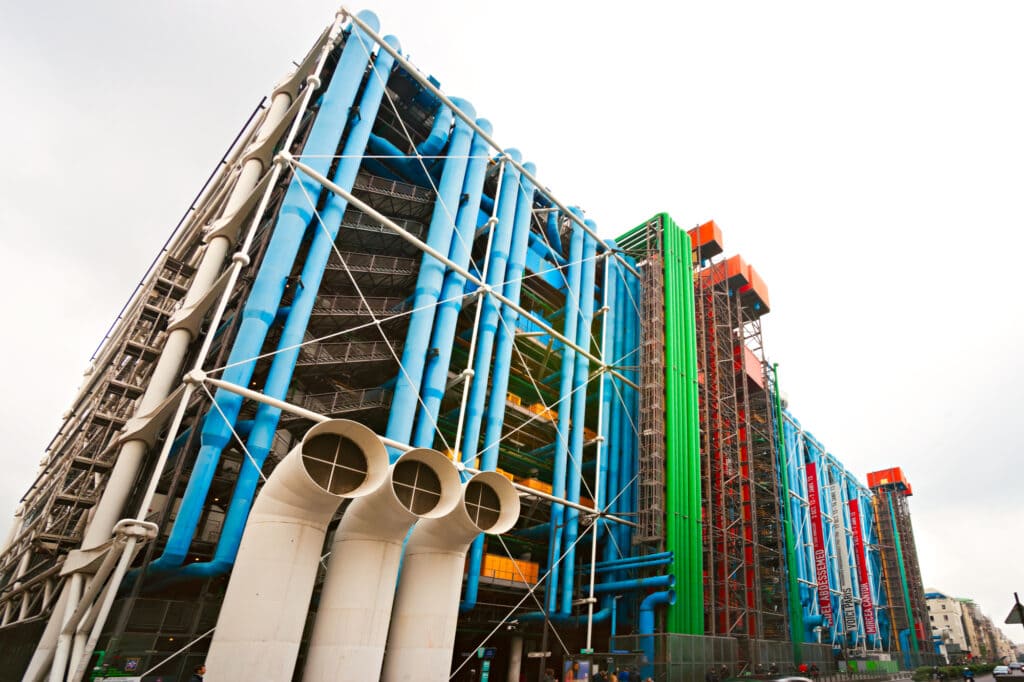
Palais Garnier
The Palais Garnier is the opera house in Paris. A stunning building commissioned by Emperor Napoleon III for the Paris Opera it was built between 1861 to 1875. The building is currently undergoing cleaning and restoration so there is a lot of scaffolding set up around it. This is a masterpiece of Neo-Baroque Architecture. If you love a musical the Opéra Garnier was used as the setting for the 1910 novel The Phantom of the Opera.

Galeries lafayette
Near the Opera, you will find it an easy walk to the Galeries Lafayette where you can spot the tourists on the rooftop terrace which is free to visit and where you can see some incredible views of Paris.
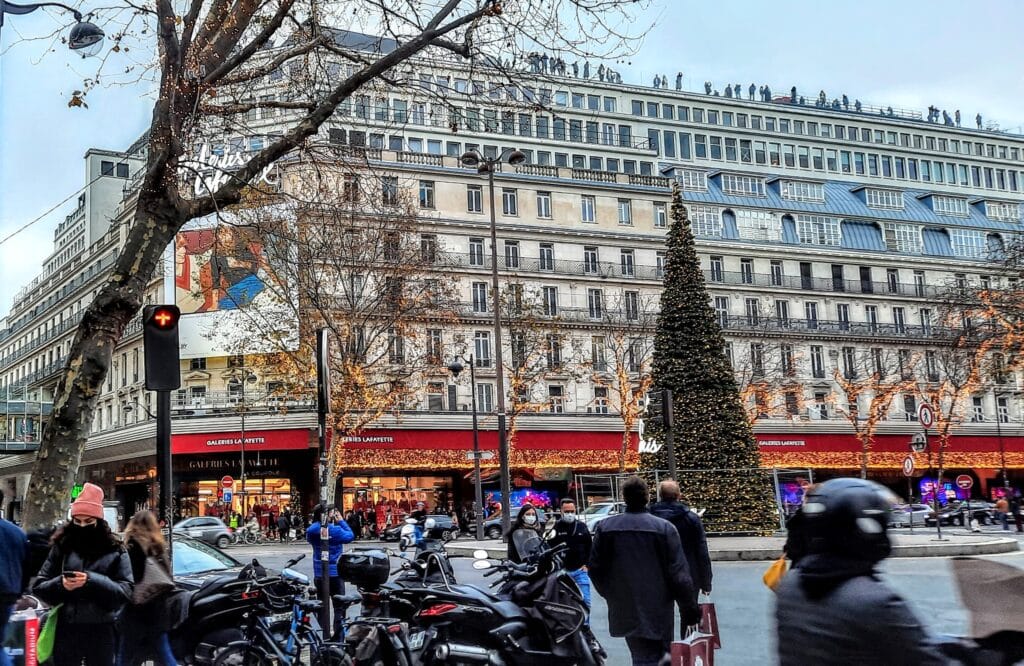
The Galeries are famous for the stained glass dome where at Christmas time a decorative Christmas tree stands in the central area and a musical light and music shows take place throughout the day.

La Samaritaine
La Samaritaine has finally re-opened near the Louvre and Pont-Neuf this stunning luxury goods store was closed in 2005. After seven years of restoration and renovation, it was re-opened in 2021.
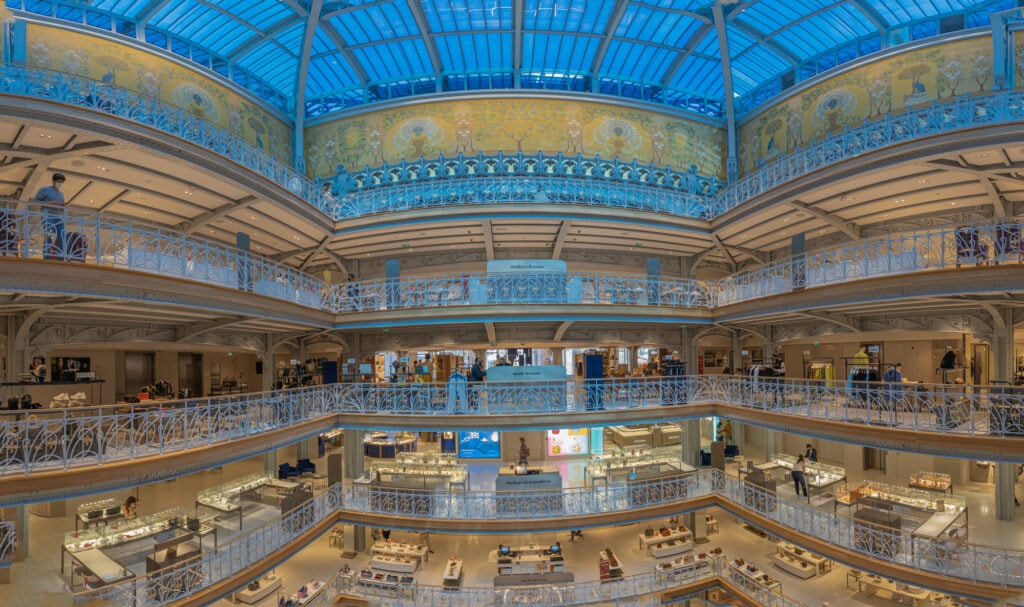
The retail luxury store has restaurants, a boutique hotel and a penthouse suite with its own private swimming pool. It is listed as a historic monument since 1990.
Ile-de-la-Cité
Before leaving Ile-de-la-Cité, and Notre Dame you should visit some of the other fascinating places including the Archaeological Crypt, the Sainte Chapelle, the Palais Conciergerie, and the Pont Neuf.
- Archaeological Crypt
- Sainte Chapelle
- Conciergerie
- Pont Neuf
- Notre Dame
Archaeological Crypt
This sits just in front of Notre Dame Cathedral and is now open again. In this underground museum, you will find a range of ancient remains which were discovered during excavations between 1965 and 1972. The museum was built around the Roman remains of former Lutetia the original Paris, including some streets, part of Lutetia’s walls, and Roman baths.
The Sainte Chapelle
A Gothic-style, royal chapel built in 1248 with the most stunning collection of 13th-century stained glass.

The Conciergerie
A 14th-century Gothic building that was formerly the King of France’s palace and later used as a prison. If you love learning more about the revolution you can explore the dungeons and the chapel where Marie Antionette was held prisoner during the last days before dying under the guillotine.

The Pont Neuf
The oldest bridge in Paris King Henri IV ordered it to be built in 1578. The bridge connects the Musée du Louvre, Rue de Rivoli and the Tour Saint-Jacques on the Right Bank with the Rue Dauphine, the Monnaie de Paris and Saint-Germain-des-Prés on the Left Bank via the Ile de la Cité, the starting point for a tour of Notre Dame Cathedral and the Sainte-Chapelle.
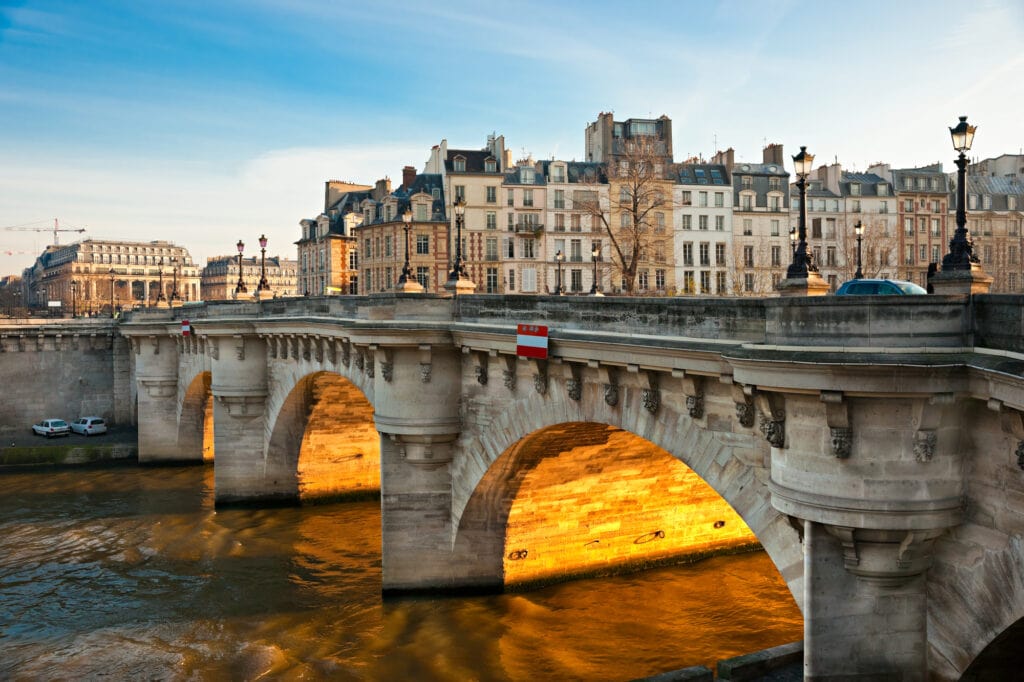
In 2008 the trend began of attaching love locks to bridges over the Seine River and today you will still see the occasional lock but these days it is illegal as it causes a lot of damage to the bridges.
Notre-Dame
Destroyed by fire in 2019 you can see the Cathedral slowly being brought back to life. Surrounded by scaffolding and a crane this is an impressive sight.
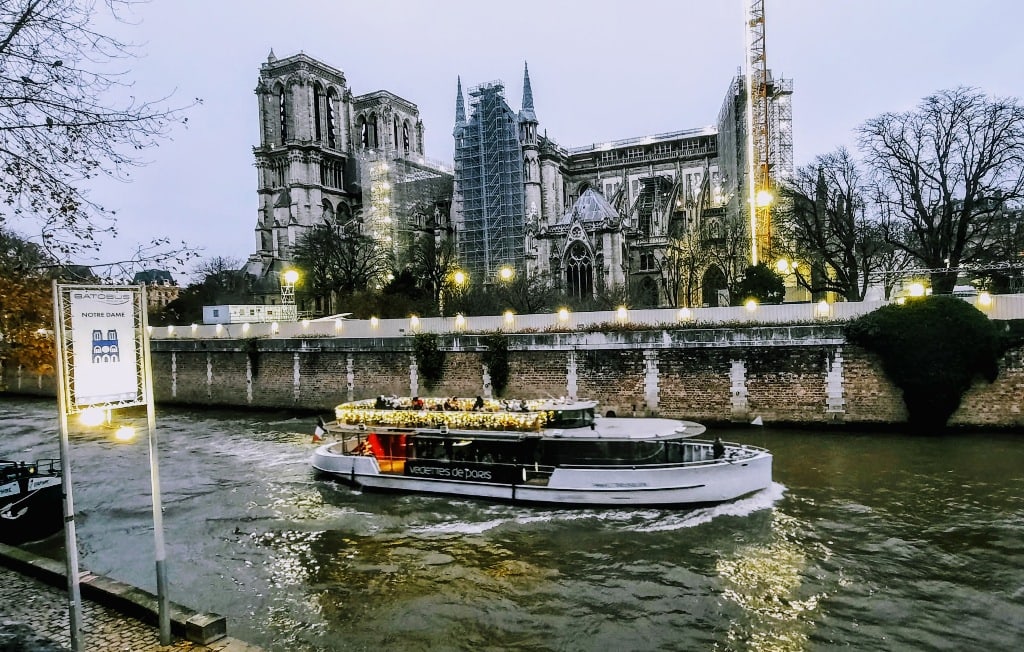
I really enjoyed reading the panels that surround the Cathedral, there you can see what it takes for this restoration and what was saved and found during the aftermath of the fire.
What to see in Montmartre
You have to spend at least one of your 5 days in Paris visiting the Montmarte area. The hop on hop off buses don’t go to this part of Paris out of season but it is still relatively simply to get there by taxi, bus or RER train.
When you think of Paris and remember those films and photos you have stared at for years depicting flower-decked houses and charming cobbled streets it is the area of Montmartre that you have probably seen. This bohemian neighbourhood is the most charming in Paris and was the home of artists such as Renoir, Monet and even Van Gogh who lived here during the 19th century.
- rue des Abbesses
- Moulin Rouge
- Sacre Coeur
- Montmarte Vineyards
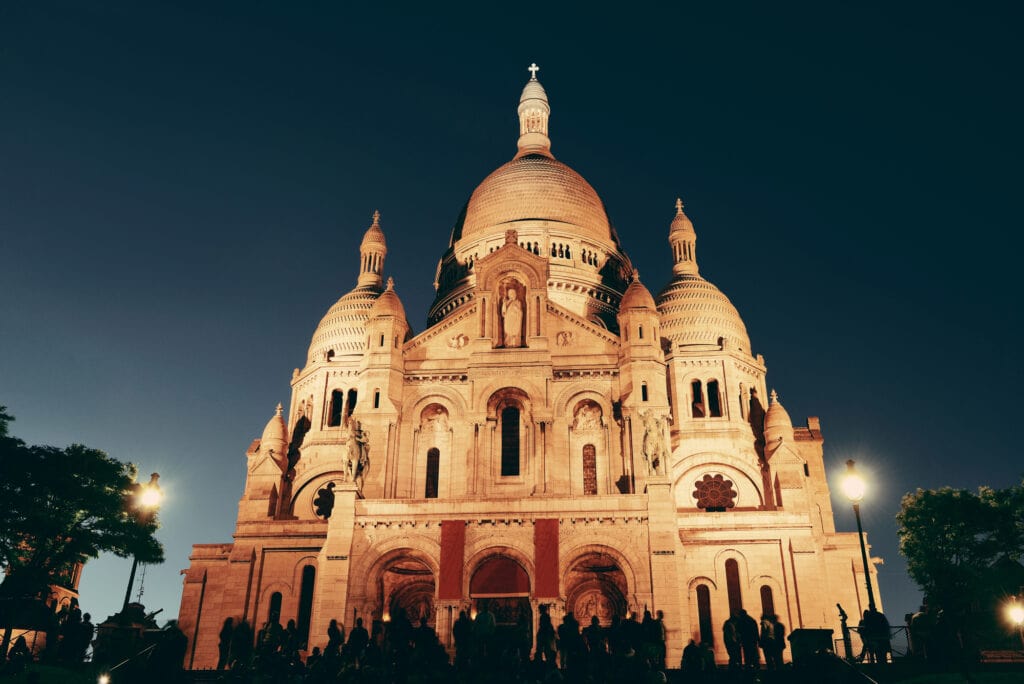
How to get to Montmarte
Metro
The blue line 2 and the green line 12 both take you in walking distance of the Sacré-Cœur. The closest metro stop to the basilica is Anvers on line 2. After exiting the station, you will see the cathedral, then it’s only a 2-minute walk up Rue de Steinkerque before you arrive at the bottom.
Similarly, Abbesses, on metro line 12, will take you 350 metres away from the bottom of the Sacré-Cœur. Upon exiting the station, it is a mere 5-minute walk down Yvonne le Tac to the cathedral.
The walk from either station will take you to the bottom of the hill and from there you can climb around 200 steps or take the funicular.
Funicular
The funicular is part of the Paris RATP transport system and can be used with the same kind of ticket used for the metro, bus or RER. The journey lasts only 90 seconds from top to bottom, but on busy days the wait to get on is very long.
Bus
The Montmartrobus passes exclusively through the historic village, stopping at all of the tourist hotspots, invading the Sacré-Cœur. The bus was recently renamed the number 40 and stops right in front of the entry to the basilica at the stop ‘Utrillo’. You can pick up the bus anywhere in Montmartre.
The Little Train
This is a 40-minute guided tour that explores this picturesque “village” from the Moulin Rouge to the Sacré-Coeur, with fabulous views of Paris. It may seem very touristy but hey if walking is an issue for you this is the way to go.
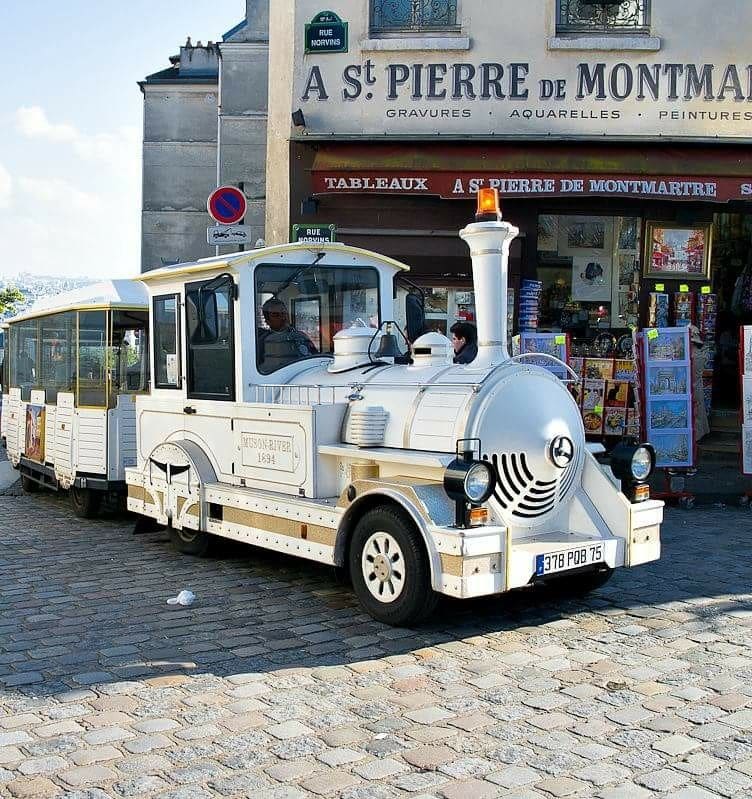
Rue des Abbesses
The street to find is the rue des Abbesses this place appears like a village with cafes, greengrocers, restaurants, pharmacies, cobblestone streets, tourists, and locals. At one end you find the Moulin Rouge and at the other is the Sacré-Coeur.
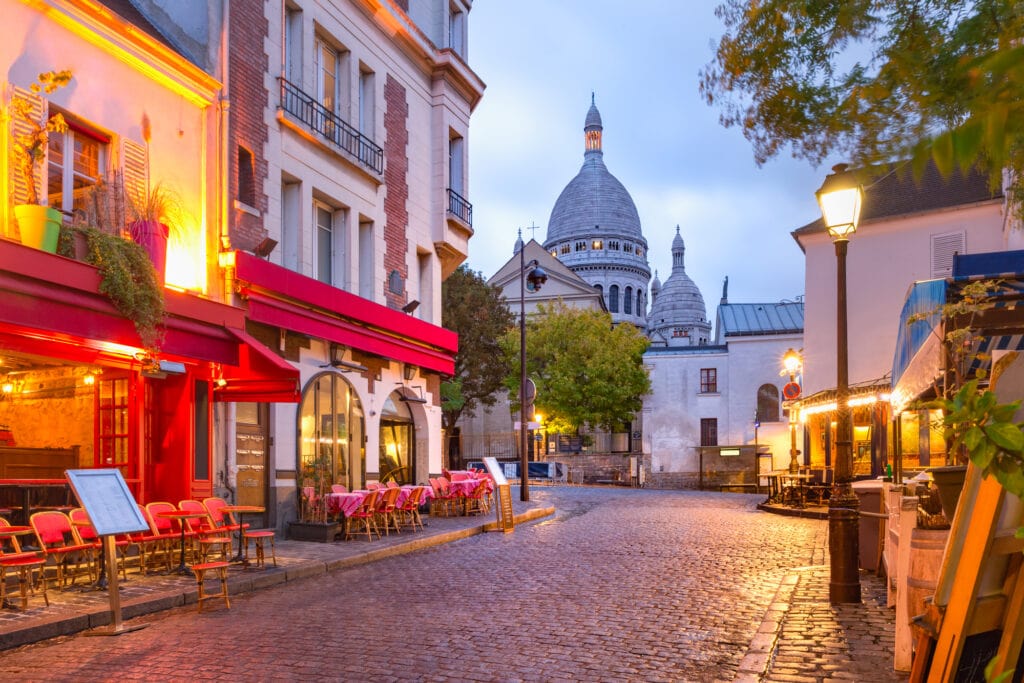
To get to the Rue des Abbesses you will have to navigate the deepest Metro station in Paris. This station is also a stunning example of Art Nouveau and one of only two “Belle Epoque” entrances designed by Hector Guimard that are still standing.
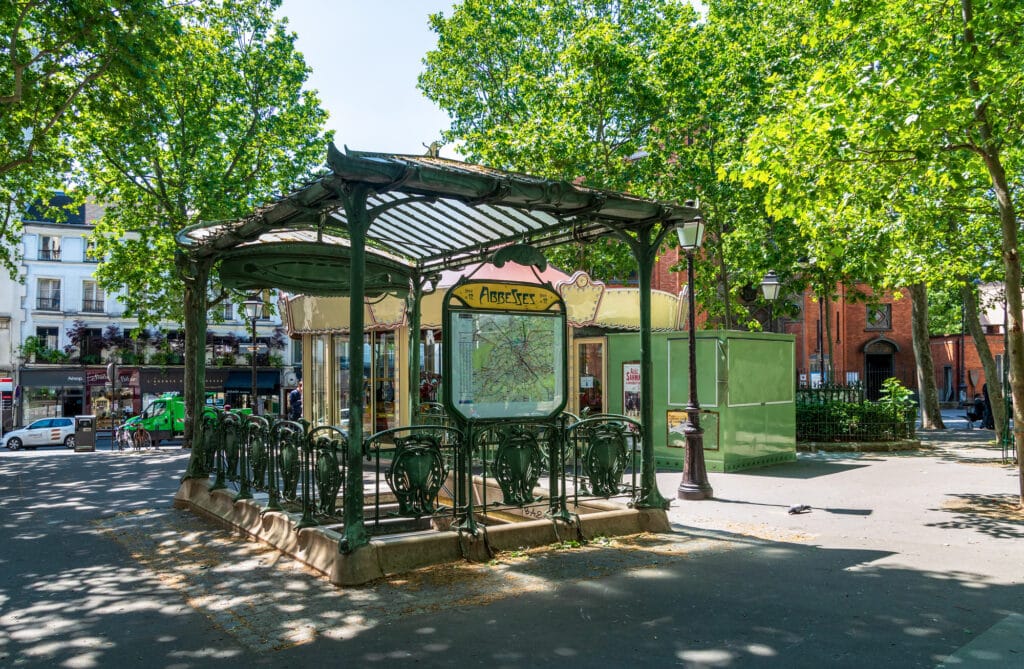
After exiting the train and going up two flights of stairs, there is a circular staircase that seems like it goes on forever. Luckily, there is also an elevator. Entering out into the streets you will be in the heart of the Montmartre where you will find dozens of beautiful cafes where you can just watch the world go by. Close by is the beautiful wall of “Je t’aimes” where messages of love have been written in countless languages.
Moulin Rouge
If you head to Montmarte you will often get dropped off by bus near the Moulin Rouge that famous Parisian nightclub and the birthplace of the can-can. A Moulin Rouge show is on many tourists’ bucket list and, if you don’t fancy stepping inside you can simply take photos of the famous windmill on the outside.

Sacré-Coeur
This Montmartre landmark is a 19th-century basilica that features a large medieval dome that provides excellent views of the city. This stunning Basilica is known for its jaw-dropping views of Paris. Located on top of Montmartre Hill is one of those Parisian attractions you must visit.
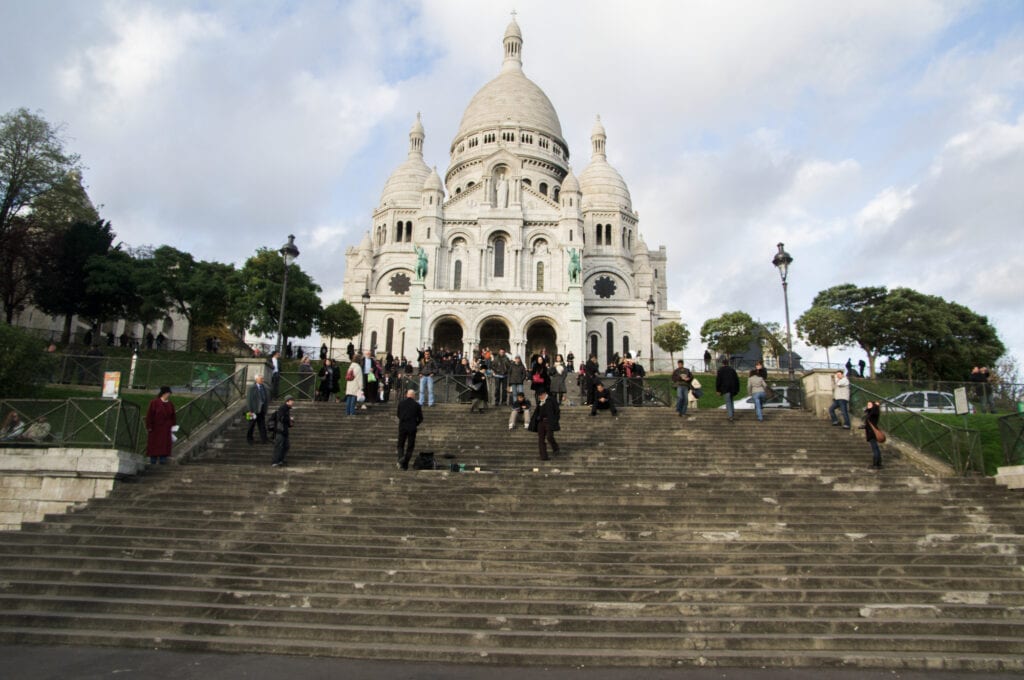
The walk-up is pretty intense with hundreds of steps but there are alternative ways to reach the top.
Montmartre Vineyards
This is a little hidden secret of Montmartre go round the west side of the basilica, into the rue Cortot, past the Musée de Montmartre and, descending, into the rue des Saules. That high wall on the right-hand side hides a tiny little vineyard. The wine produced here is sold and the proceeds go to Parisian charities.
The final recommendation for your 5 days in Paris
Père Lachaise
This for me was one of the areas of Paris that I most wanted to visit. Situated in the 20th arrondissement of Paris, it covers 44 hectares and contains 70,000 burial plots.
On the moss-damped green paths, you will find the burial places of; Honoré de Balzac, Frédéric Chopin, Colette, Molière, Yves Montand, Jim Morrison, Edith Piaf, Camille Pissarro and Oscar Wilde. The remains of Abelard and Héloïse (who died in 1142 and 1164, respectively) are reportedly the oldest identifiable bones in the cemetery.
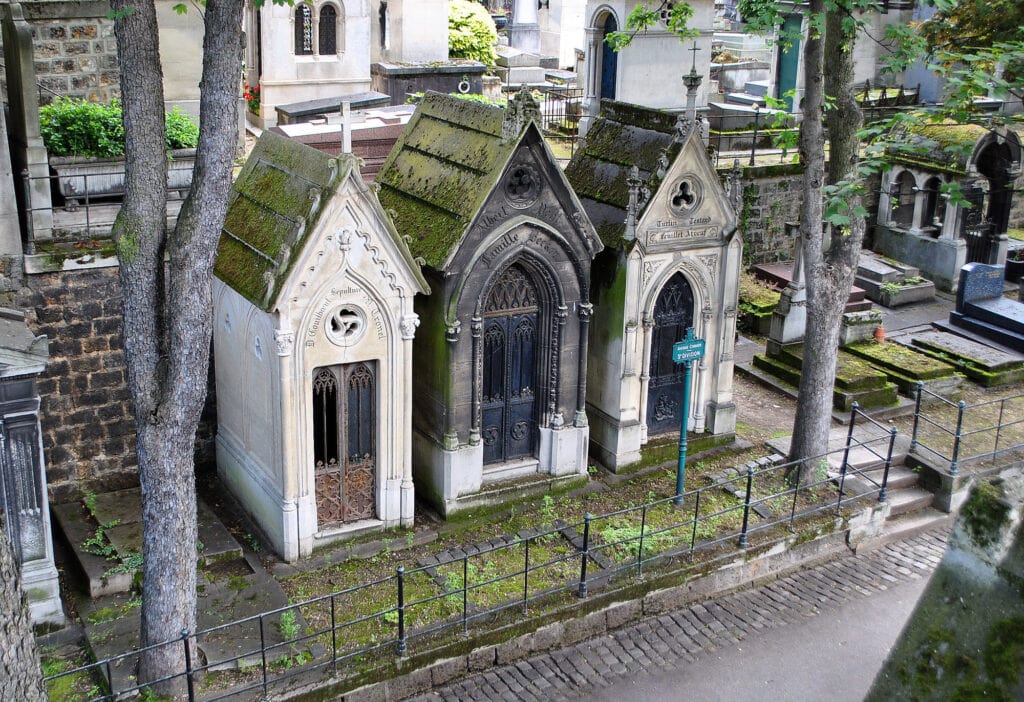
You can still be buried here but only around 170 plots are allocated each year and they cost 16,000 euros apiece. However, the rules to be buried in a Paris cemetery are rather strict: only people who die in the French capital city or if they lived there can be buried here.
Visit the famous Glasnevin Cemetary in Dublin and trace your Irish ancestry
And there you have it a comprehensive list from which to build a Paris itinerary for your trip. You can pick and choose what areas you have to visit to suit your own individual preferences.
Interested in reading more about visiting France? Here are some more articles for you.
Beautiful villages in Normandy
The beaches of Normandy – lest we forget
Dinan France – medieval France at its finest
The Ultimate guide to visiting Rennes France
Food in Brittany: Fall in love with the food of Bretagne
Castles of the Loire Valley France
French Cheese – 23 amazing types of French cheese
French Food Culture: The Ultimate Guide
